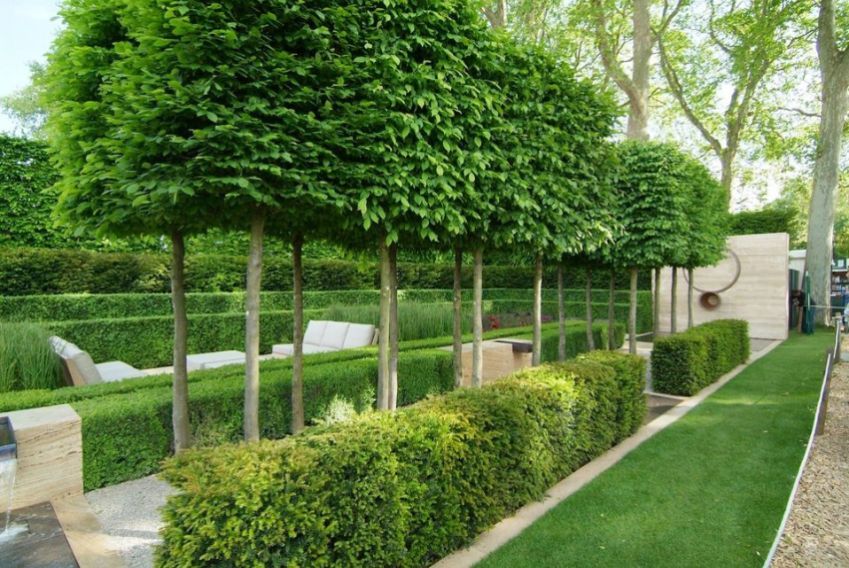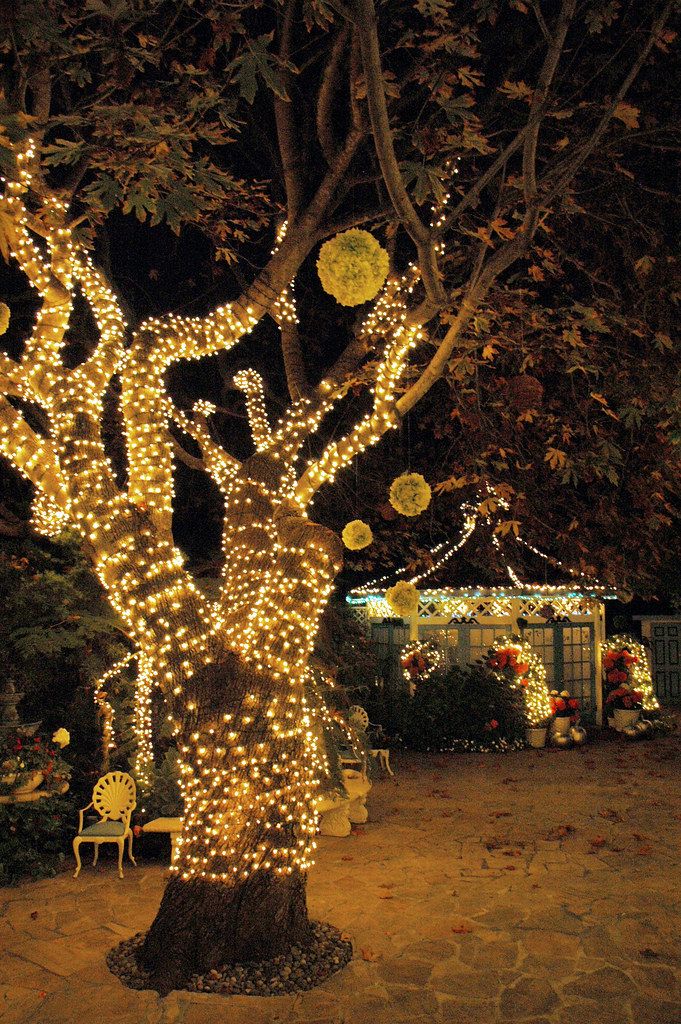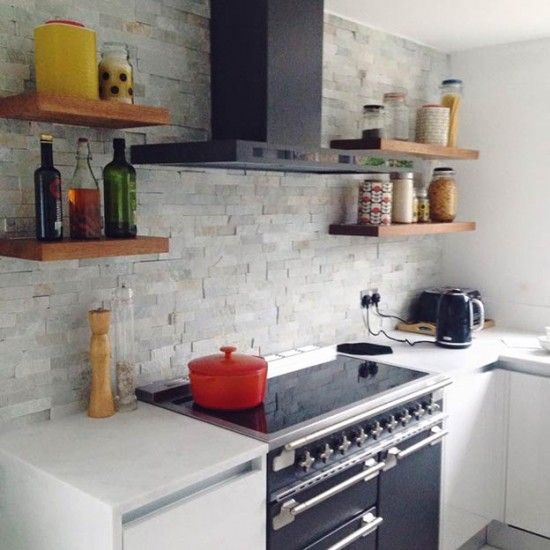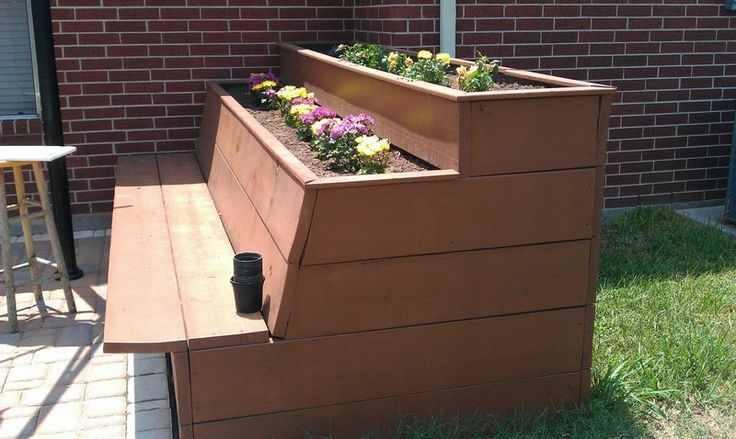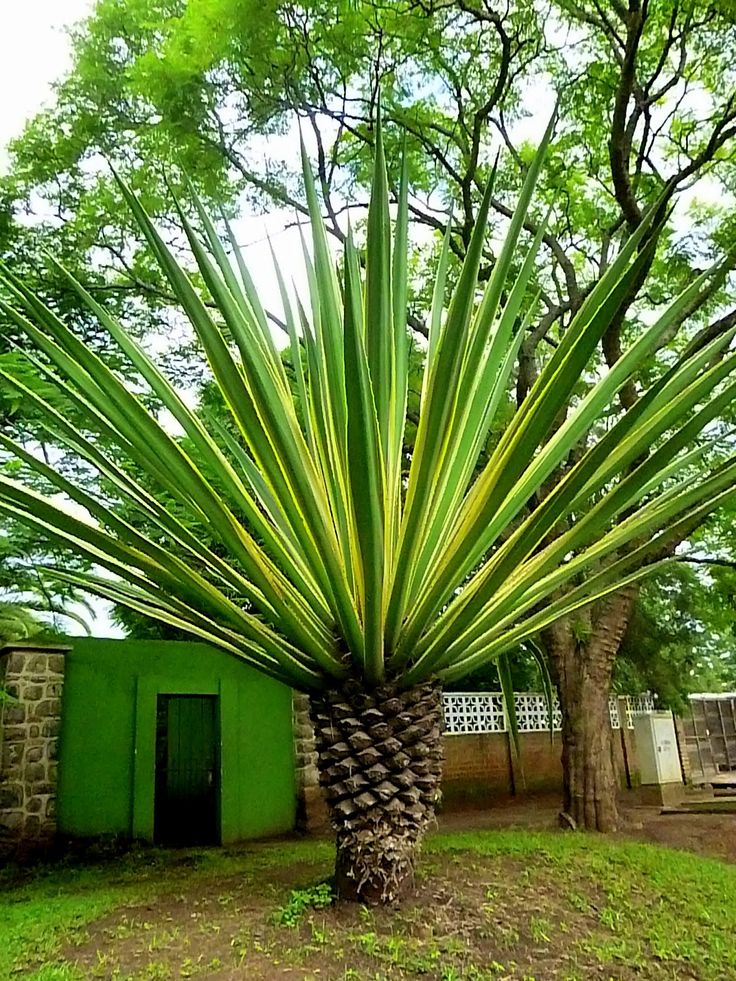Trees to use as privacy fence
The Best Trees for Privacy in Your Yard
Looking for trees that provide privacy from the wrong kind of neighborhood watch?
Planting a natural privacy fence is a sustainable, eco-friendly alternative to a hardscaped privacy fence, and that’s not the only positive, according to Alex Kantor of Perfect Plants Nursery:
“The benefits of using trees for privacy are endless. They have low-maintenance qualities, help seclude you from nosy neighbors, provide lush green landscape year-round (especially if they are evergreen), shield your property from wind and noise, create shade and offer beautiful scenery to view.”
Alex Kantor | Perfect Plants
There are a lot of options and factors to keep in mind when planning to build a tree fence. “While traditional fences can be installed almost anywhere, a ‘green fence’ needs sunlight and water to thrive,” says Missy Henriksen of the National Association of Landscape Professionals.
Find the right trees to block your neighbors with this full breakdown of the most popular privacy tree options.
Top 10 Trees for a Natural Privacy Fence
1. Eastern Redcedar
For a large, rugged privacy tree that provides full coverage, the Eastern Redcedar is the conifer for you. “Evergreen plants like broadleafs or conifers are generally a good choice for year-round effectiveness,” according to Henriksen, making this durable juniper a great tree fence option. Its red, aromatic wood and thick foliage will give your backyard an earthy fragrance and attract local birds and other wildlife.
What You Need to Know
- Height Range: 40-60 feet
- Width Range: 10-20 feet
- Sunlight Guidelines: Full to partial (4 to 8 hours of direct sun per day)
- Planting Guidelines: Eastern Redcedars can reach 60 feet high and 20 feet wide at maturity, so they’re best suited for larger backyards.
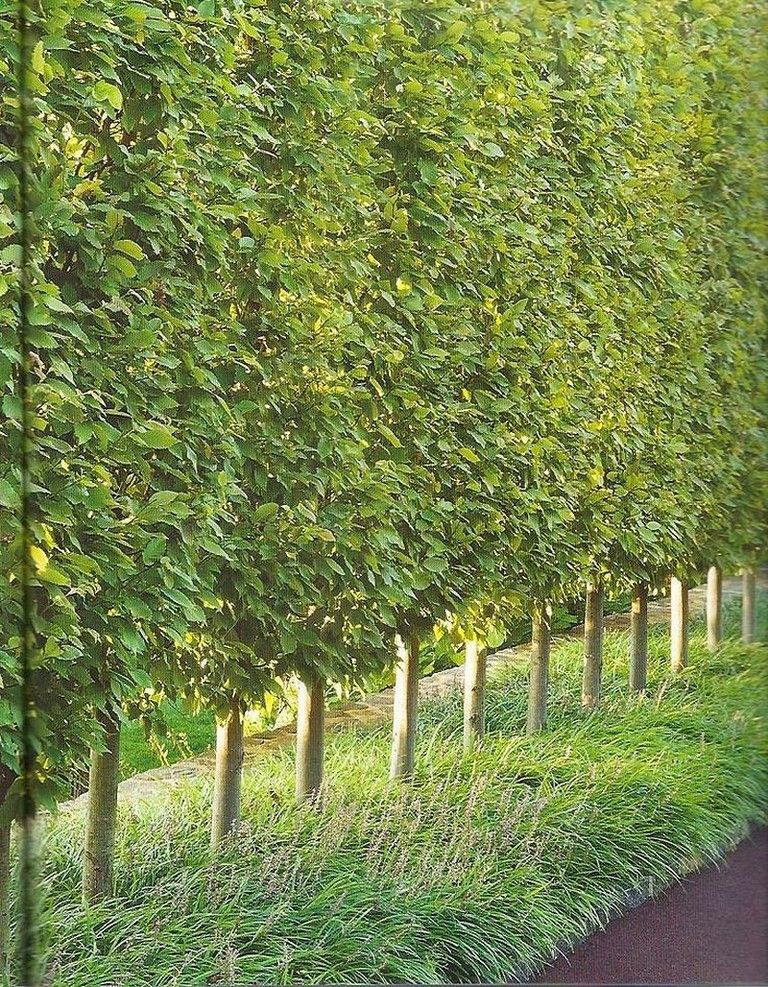 If you have the space, make sure to plant these about 20 feet apart and away from power lines or neighboring homes.
If you have the space, make sure to plant these about 20 feet apart and away from power lines or neighboring homes. - Preferred Climate: 3-9 outdoor growing zone, hardy down to -30℉. This fast-growing privacy tree is one of the hardiest and most tolerant options available, thriving in cold, hot, dry and wet areas across the country.
- Garden Styles Suited For: Natural or rustic
2. Hybrid Willow Tree
The Hybrid Willow has a growth rate of 6 to 10 feet per year, and this disease-resistant plant typically reaches its mature height in just five years. They were bred to quickly form a thick wall that blocks out neighbors and noise. These privacy trees grow well even in cold environments, and their dense foliage makes them great windbreak trees. They’re also great for drying out swampy soil.
What You Need to Know
- Height Range: 35-45 feet in rows, 75 feet alone
- Width Range: 20 feet
- Sunlight Guidelines: Full to partial (3 to 6+ hours of direct sun per day)
- Planting Guidelines: Hybrid Willows require a lot of water but can withstand periods of drought with the right maintenance.
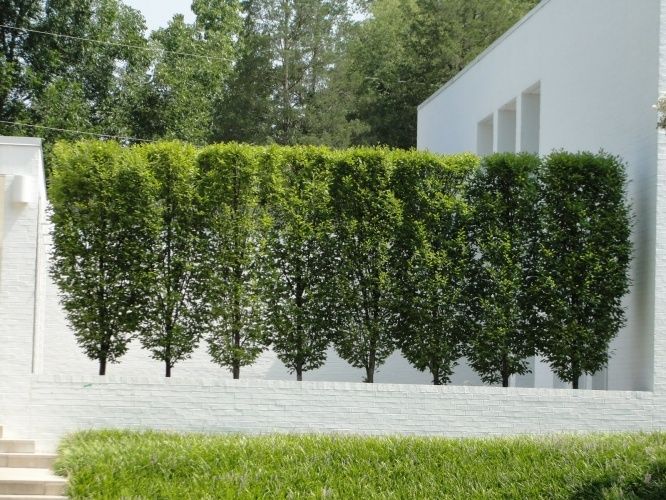 These plants do best in mid-sized to large yards. If spaced incorrectly, they can reach a towering 75 feet in height, so to create a manageable Hybrid Willow tree fence, be sure to plant them about 5 feet apart.
These plants do best in mid-sized to large yards. If spaced incorrectly, they can reach a towering 75 feet in height, so to create a manageable Hybrid Willow tree fence, be sure to plant them about 5 feet apart. - Preferred Climate: 4-9 outdoor growing zone, hardy down to -20℉. Considered to be the fastest-growing privacy tree, it’s tolerant of a variety of growing conditions and can fill common trouble spots in the yard.
- Garden Styles Suited For: Traditional, contemporary or Zen
3. Leyland Cypress
One of the most popular trees for privacy, the Leyland Cypress is a beautiful, fast-growing evergreen that is great for solid, full coverage in large backyards. They have been known to reach heights of 50 feet in just 15 years. When planted in a row, they create an impenetrable mass of branches that make them great trees for screening wind, snow and even noise.
What You Need to Know
- Height Range: 40-60 feet in rows, 70 feet alone
- Width Range: 15-20 feet in rows, 30 feet alone
- Sunlight Guidelines: Full (6+ hours of direct sun per day)
- Planting Guidelines: The Leyland Cypress can handle droughts, pests and even air pollution, and their high tolerance to salt makes them good privacy trees in coastal areas.
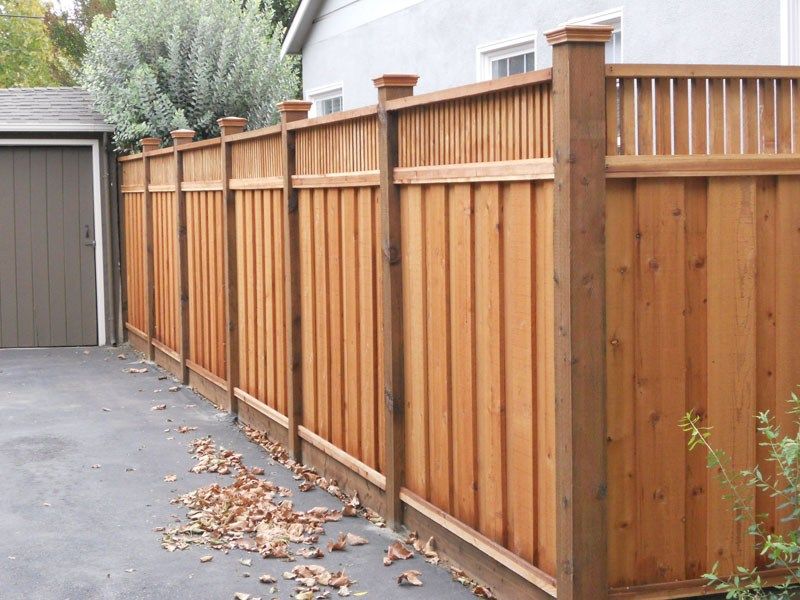
- Preferred Climate: 6-10 outdoor growing zone, hardy down to 0℉. These are one of the fastest-growing evergreen trees and great for defining property lines as a natural privacy fence, but due to their shallow root system, these trees are not well-adapted to hot summers and are susceptible to root rot. They do best in large, well-drained yards with mild to moderate temperature highs.
- Garden Styles Suited For: Mediterranean or traditional
4. Spartan Juniper
If your yard can’t accommodate some of the larger privacy fence trees, the Spartan Juniper is a great option for mid-sized backyards. Planted in a row, Spartan Junipers provide a stately, uniform look to any backyard, and their compact foliage makes them effective windbreak trees.
What You Need to Know
- Height Range: 15 feet
- Width Range: 3-5 feet
- Sunlight Guidelines: Full (6+ hours of direct sun per day)
- Planting Guidelines: Spartan Junipers prefer dryer soil and lots of sunlight.
 To prevent root rot and other ailments, make sure not to overwater them and plant them about 5 feet apart. These trees don’t do well with heavy pruning, so be sure to plant them in spaces they will fit naturally at their full size.
To prevent root rot and other ailments, make sure not to overwater them and plant them about 5 feet apart. These trees don’t do well with heavy pruning, so be sure to plant them in spaces they will fit naturally at their full size. - Preferred Climate: 5-9 outdoor growing zone, hardy down to -10℉. These are water-efficient trees which can be watered by natural rainfall after the first year of planting, though if there is a drought you should water them 1 inch per week. The Spartan Juniper can handle hot or cold temperatures and keeps its dark green color all year.
- Garden Styles Suited For: Contemporary, Mediterranean or Zen
5. Sky Pencil Holly
Looking for trees that provide privacy while taking up very little space? The Sky Pencil Holly is the right plant for you. With a mature height between 8 to 10 feet tall and a width of just 2 feet, Sky Pencil Hollies act as the ultimate space-saving privacy fence trees while still providing solid protection from wind, noise and wandering eyes.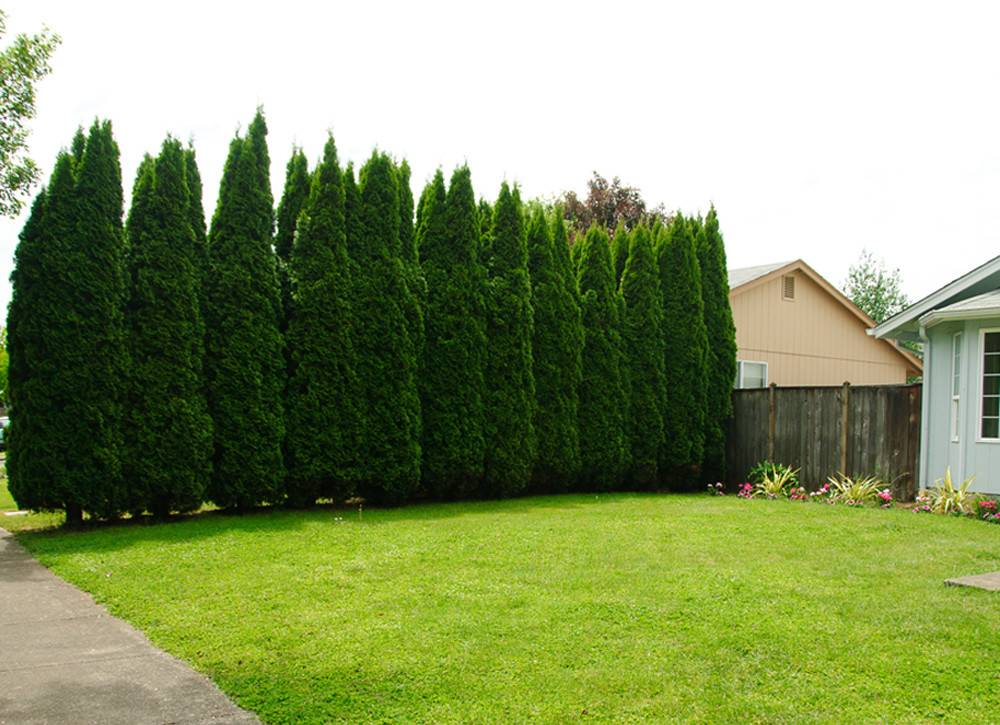
What You Need to Know
- Height Range: 8-10 feet
- Width Range: 2 feet
- Sunlight Guidelines: Full to partial (3 to 6+ hours of direct sun per day)
- Planting Guidelines: Sky Pencil Hollies are able to thrive both in the ground and in decorative containers. Unlike their thorny cousin, the Holly Bush, their foliage is soft to the touch, making them the perfect trees for privacy on patios, urban decks and small backyards.
- Preferred Climate: 5-9 outdoor growing zone, hardy down to -10℉. These privacy trees prefer light, moist soils but are adaptable to different climates. Like many evergreens, these plants can develop root rot if overwatered, so be sure to give them a well-drained environment.
- Garden Styles Suited For: Contemporary or Zen
Working on a backyard makeover?
Find the best way to get rid of dirt, rocks and yard waste from your landscaping project.
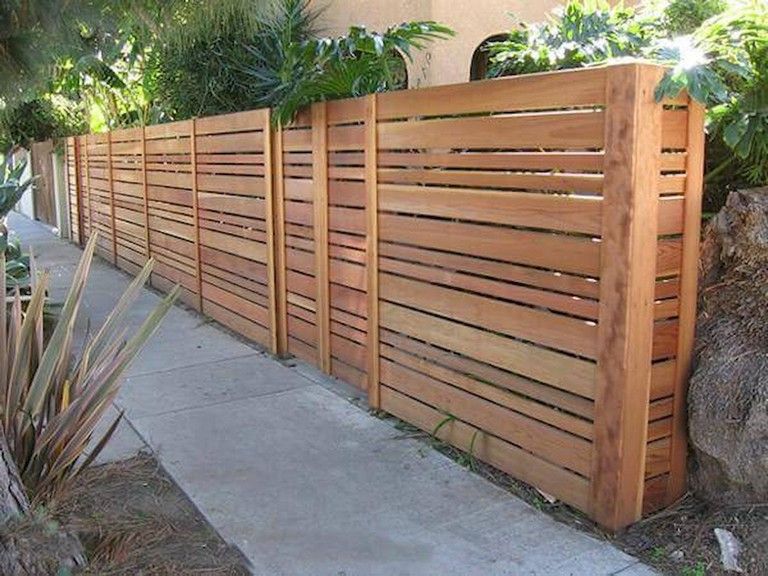
6. Green Giant Thuja (Arborvitae)
The Green Giant Thuja is widely considered one of the best trees for privacy, making it a fan favorite in many backyards. “Thujas are one of our most popular trees,” says Kantor. “They are extremely fast-growing, provide privacy quickly and are also cold hardy. They can survive in a multitude of climates and are not affected by many pests or diseases.”
Their uniform, cone-like shape and consistent annual growth rate of 3 to 5 feet make for a polished tree privacy fence that requires very little pruning to maintain. You can trim the tops regularly for a classic, French Renaissance feel or leave them alone for a more natural look.
What You Need to Know
- Height Range: 30-40 feet
- Width Range: 5-8 feet in rows
- Sunlight Guidelines: Full to partial (3 to 6+ hours of direct sun per day)
- Planting Guidelines: If you like the height and density of the Leyland Cypress but don’t have the conditions to maintain it, the Green Giant is a great alternative.
 Just be sure to have a defense against deer on hand, as their soft leaves and branches are irresistible to these native grazers.
Just be sure to have a defense against deer on hand, as their soft leaves and branches are irresistible to these native grazers. - Preferred Climate: 5-9 outdoor growing zone, hardy down to -10℉. These durable, fast-growing trees are tolerant to heat and humidity, as well as drought and different types of soil. However, the planting site must have proper drainage.
- Garden Styles Suited For: Contemporary, traditional or rustic
7. Emerald Green Thuja (Arborvitae)
With a mature height of just 12 to 14 feet, the Emerald Green Thuja offers the classic beauty of its giant cousin at half the size. Their controlled growth rate of just 6 to 9 inches per year makes them a great choice for landscaping areas that are limited on space.
What You Need to Know
- Height Range: 12-14 feet
- Width Range: 3-4 feet in rows
- Sunlight Guidelines: Full to partial (3 to 6+ hours of direct sun per day)
- Planting Guidelines: These beauties are a great choice for mid-sized yards, and their slender shape makes them ideal as foundation plants along the home – just be sure to give them enough room to grow vertically.
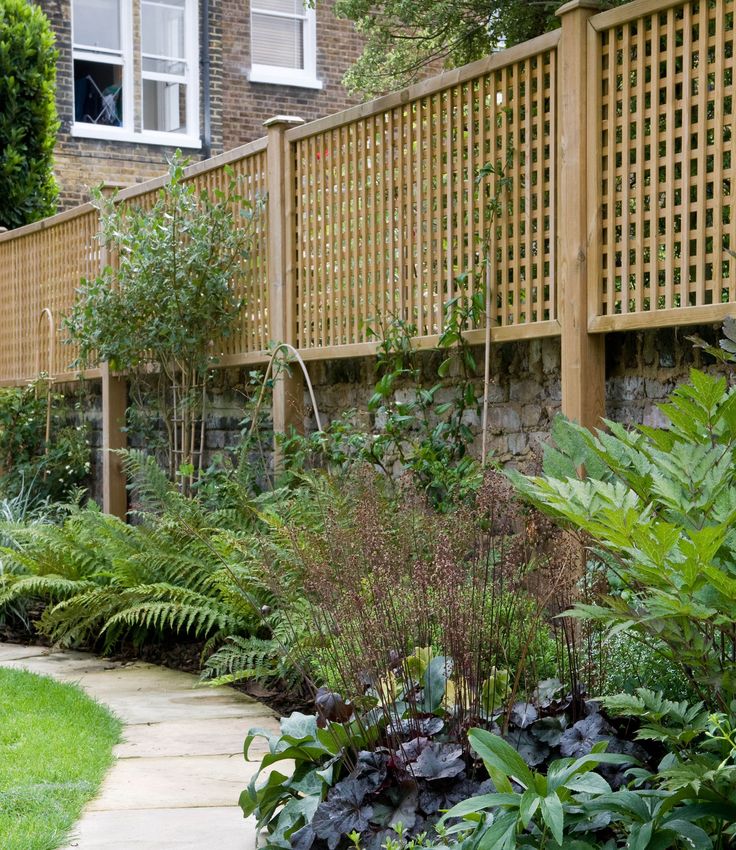 When planting these trees for privacy or wind blockage, it’s best to space them about 2 feet apart for optimal coverage.
When planting these trees for privacy or wind blockage, it’s best to space them about 2 feet apart for optimal coverage. - Preferred Climate: 3-8 outdoor growing zone, hardy down to -30℉. These privacy trees are very adaptable, resistant to snow and ice, drought-tolerant and will thrive in most climates.
- Garden Styles Suited For: Contemporary, Mediterranean, Zen or rustic
8. Flowering Dogwood
Flowering Dogwoods are great privacy trees for those looking for seasonal coverage with a pop of color. Dogwoods come in a variety of colors including white, pink and red, and their ornamental berries will make your backyard popular with local robins, cardinals and blue jays.
What You Need to Know
- Height Range: 15-25 feet
- Width Range: 15-25 feet
- Sunlight Guidelines: Full to partial (3 to 6+ hours of direct sun per day)
- Planting Guidelines: Dogwoods do best in large to mid-sized backyards.
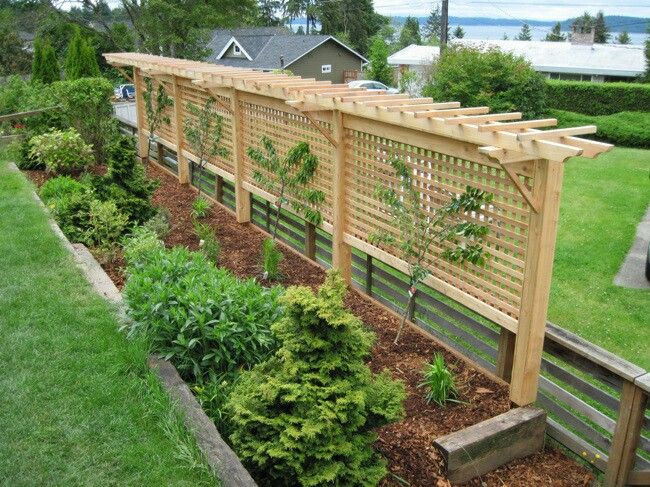 Their beautiful, compact blooms are great for vertically extending an existing privacy fence when planted 20 feet apart. They can also be strategically placed for spot coverage – for instance, blocking your neighbor’s favorite view of your lawn chairs.
Their beautiful, compact blooms are great for vertically extending an existing privacy fence when planted 20 feet apart. They can also be strategically placed for spot coverage – for instance, blocking your neighbor’s favorite view of your lawn chairs. - Preferred Climate: 5-8 outdoor growing zone, hardy down to -10℉. These trees prefer well-drained soil that is not too dry and can thrive year-round in both hot and cold climates.
- Garden Styles Suited For: Traditional or rustic
9. Weeping Podocarpus
These fast-growing, woody evergreens are a popular privacy tree choice in places like Florida and California. Weeping Podocarpus trees have plush, billowing foliage and work well as spot privacy trees or in a full natural privacy fence.
What You Need to Know
- Height Range: 35-45 feet
- Width Range: 10-20 feet
- Sunlight Guidelines: Full to partial (3 to 6+ hours of direct sun per day)
- Planting Guidelines: These plants will do best on large properties and should be planted 10 to 15 feet away from homes and other buildings.
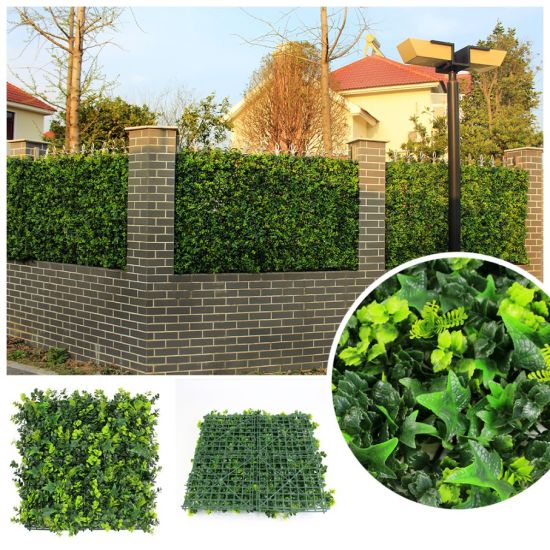 When planting in a row, allow about 5 to 10 feet of space between each tree.
When planting in a row, allow about 5 to 10 feet of space between each tree. - Preferred Climate: 9-11 outdoor growing zone, hardy down to 20℉. This tree’s drought tolerance, preference for dry soil and ability to thrive in mildly salty conditions make it an ideal choice for southern and coastal areas.
- Garden Styles Suited For: Tropical, contemporary or rustic
10. Goldspire Ginkgo
For privacy trees that are as beautiful as they are functional, try lining your yard with Goldspire Ginkgo. These unique trees take on a narrow, pyramidal shape with their deep green summertime leaves giving way to stunning golden hues each fall.
What You Need to Know
- Height Range: 14-16 feet
- Width Range: 5-6 feet
- Sunlight Guidelines: Full to partial (3 to 6+ hours of direct sun per day)
- Planting Guidelines: The Goldspire Ginkgo is a durable, smog-resistant tree that will do well in mid-sized backyards.
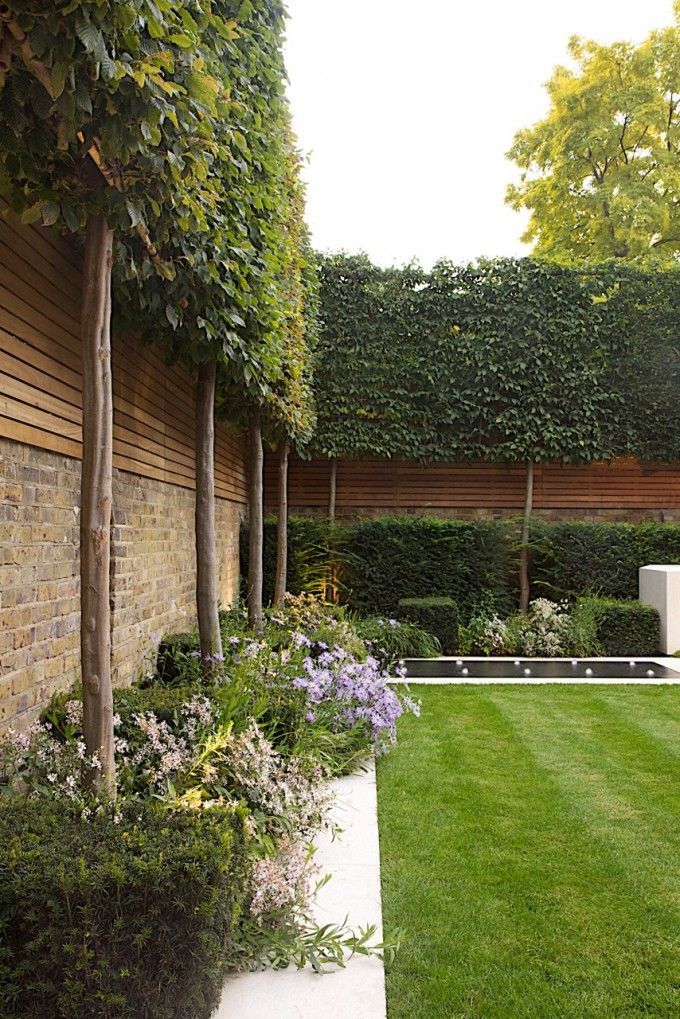 Just be careful not to confuse it for its cousin, the Ginkgo. Ginkgo trees can reach sizes of 40 to 60 feet, and their berries smell awful. Goldspire Ginkgos are specifically bred for their smaller, slender shapes and lack the pungent fruit of their cousins.
Just be careful not to confuse it for its cousin, the Ginkgo. Ginkgo trees can reach sizes of 40 to 60 feet, and their berries smell awful. Goldspire Ginkgos are specifically bred for their smaller, slender shapes and lack the pungent fruit of their cousins. - Preferred Climate: 4-9 outdoor growing zone, hardy down to -20℉. This versatile, low-maintenance privacy tree thrives in a wide variety of climates. Natural rainfall should supply its water needs after the first year of planting, though the soil must have proper drainage.
- Garden Styles Suited For: Zen or traditional
What are the Best Privacy Trees for Your Backyard?
“When selecting plants for a fence, it’s important to take into consideration the specific region of the country where you live,” says Henriksen. If you’re ever unsure about a tree’s fit, just ask a nearby landscape expert. They have extensive knowledge of trees that provide privacy and that will also thrive in your local climate.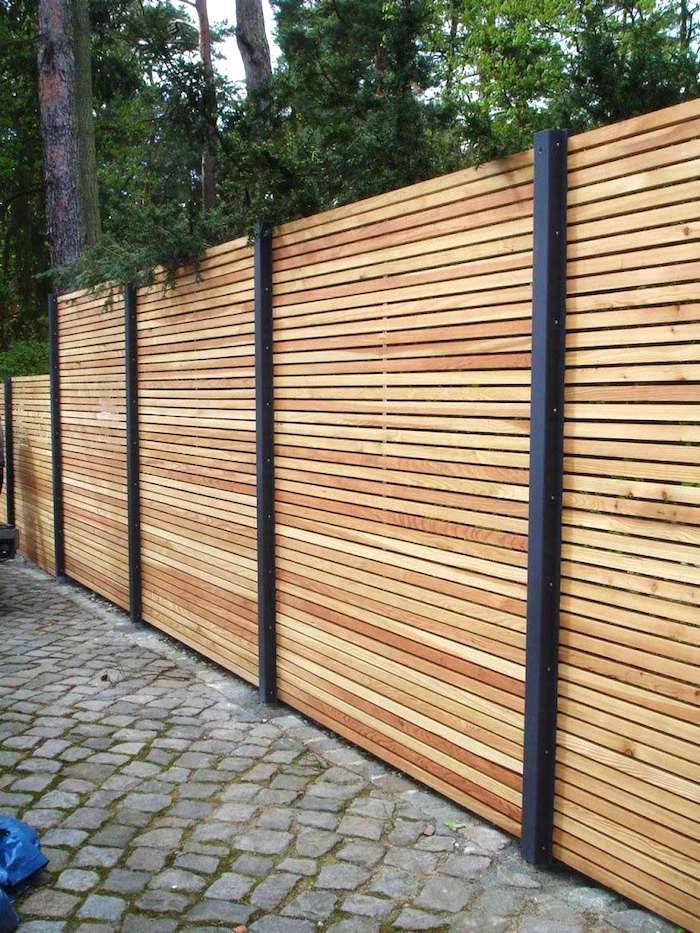
Take measurements and have a few pictures of your backyard on hand so they have some idea of the space you’re working with. And always remember that good tree fences make good neighbors.
Going for a whole new look outdoors? Check out these articles for more landscaping makeover tips:
- How to Redo a Flower Bed
- 10 Budget-Friendly Backyard Landscaping Ideas
- How to Add Curb Appeal to Your Home
The Best Trees for Privacy Screening in Big and Small Yards
Regardless of whether your yard is large or small, privacy is something everyone is looking for. While the old saying “fences make good neighbors” is definitely true, I’d much rather gain some much-needed backyard solitude by using lush, green plants instead of a stiff, boring fence. Thankfully, there are may great privacy trees for yards both big and small. They shield your outdoor space from nosey neighbors, help buffer street noise, and create the sense of seclusion necessary to make your yard a peaceful haven.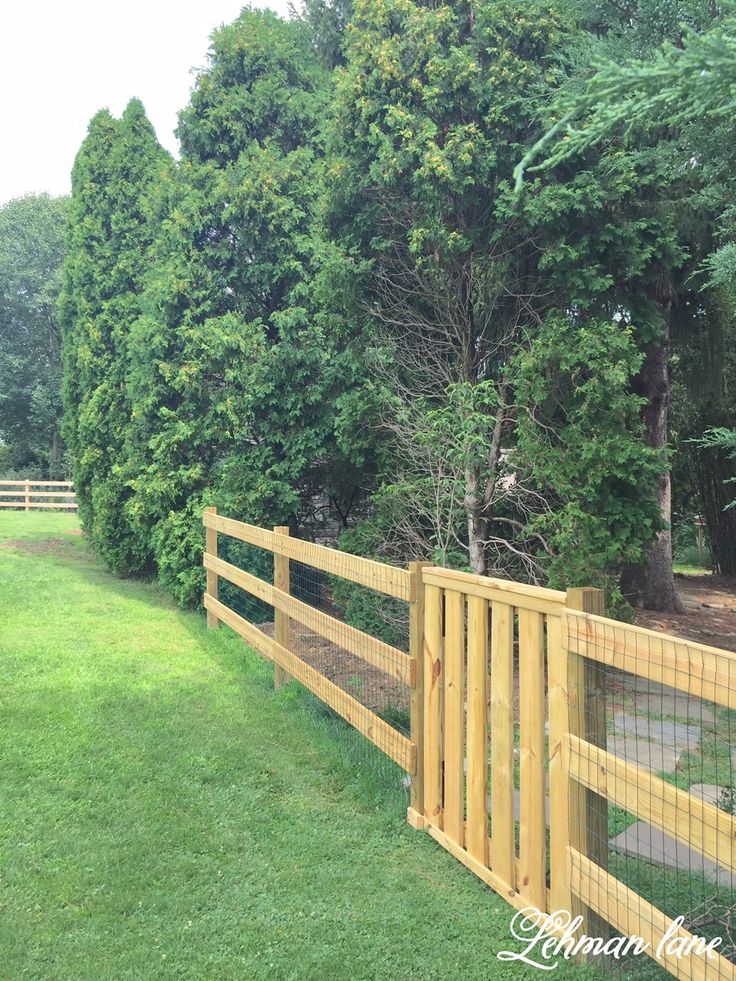 Today, I’d like to introduce you to some of the best trees for privacy.
Today, I’d like to introduce you to some of the best trees for privacy.
What do all good trees for privacy have in common?
Before looking at which specific varieties of trees are best for screening, it’s important to discuss the traits all good privacy trees have in common.
1. Privacy trees are easy to grow.Fussy trees are not a good fit for creating privacy. If a tree is difficult to grow, or it won’t survive in a broad diversity of soil and sunlight conditions, I don’t bother using it for this purpose. I need something tough that doesn’t have to be coddled.
2. Trees for screening are evergreen.Since privacy is something most of us want year-round, why use a deciduous tree that drops its leaves every winter? Dense evergreens with thick branches are the best trees for privacy.
3.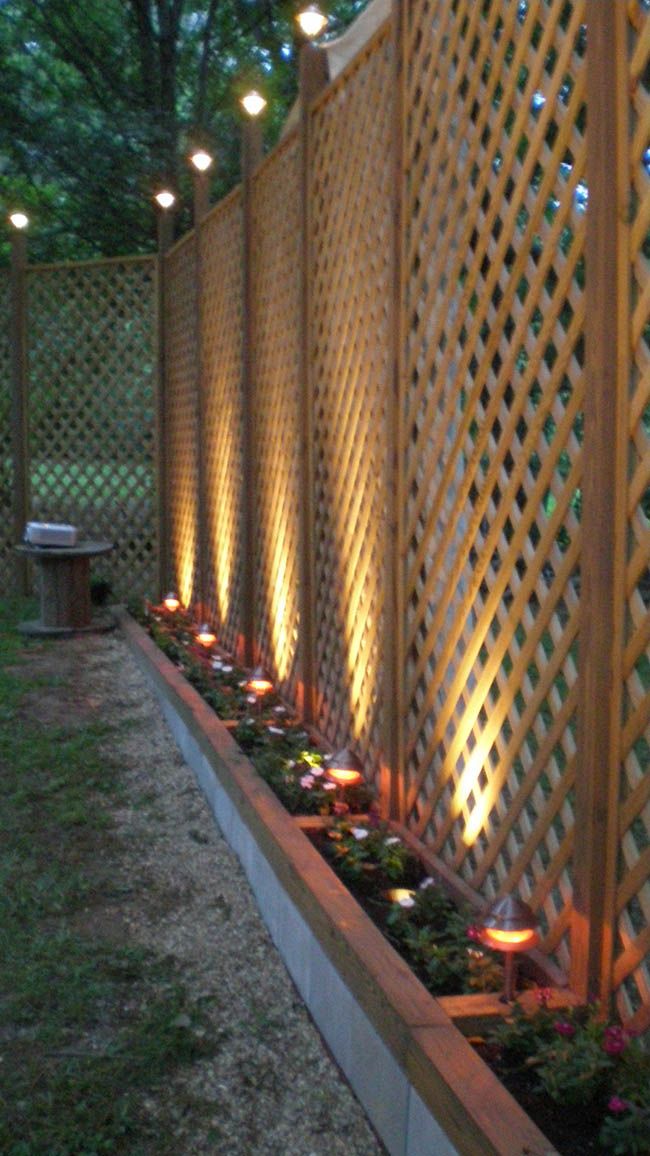 Trees to create privacy are easy to find on the market.
Trees to create privacy are easy to find on the market.What’s the use of learning about the best trees for privacy only to discover you can’t find them at your favorite local nursery? All of the trees on this list are common finds at regional garden centers and online nurseries.
4. Privacy trees are pretty.Most folks who install plantings for privacy want the results of their efforts to be attractive. They want to look at soft green foliage, not ugly plant shapes, needles, or leaves.
5. The best trees to create seclusion can be planted close together.Most plantings for privacy are spaced fairly tight. Some evergreens need lots of room to grow and don’t do well so close to their neighbors. The best trees for privacy thrive in dense plantings.
Privacy plantings along streets and property lines should be thickly planted.6. Evergreens used to create a backyard retreat are easy to maintain.Yes, you’ll have to water your privacy trees deeply and regularly, at least for the first year after planting.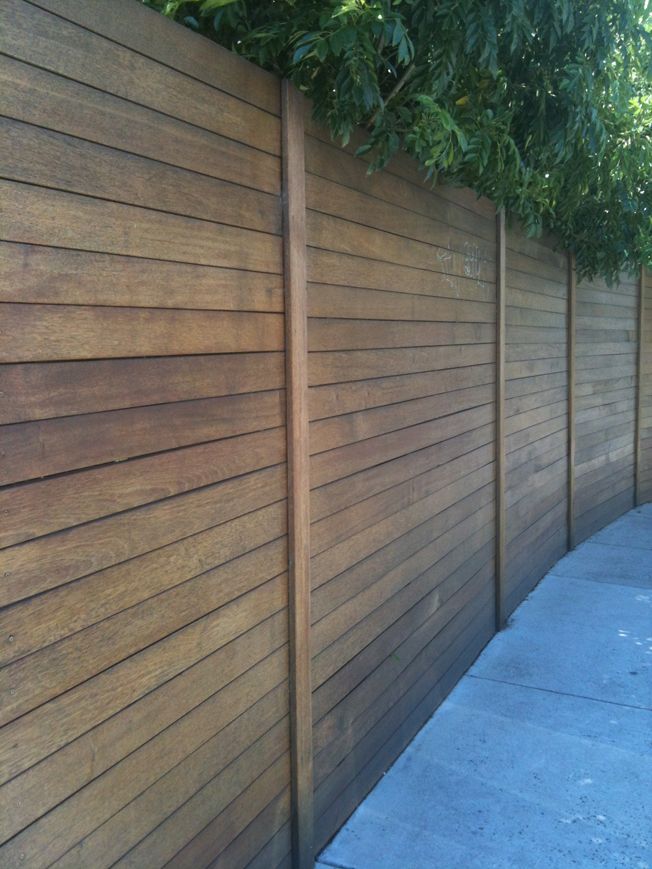 But the best trees for privacy don’t have to be pruned, deadheaded, fertilized, or otherwise maintained. Plus, they’re pest resistant and tough-as-nails.
But the best trees for privacy don’t have to be pruned, deadheaded, fertilized, or otherwise maintained. Plus, they’re pest resistant and tough-as-nails.
To block the neighbor’s view, you need plants that reach at least 6 to 8 feet in height. Many of the trees on my list grow much taller. If you live in a smaller yard and want a privacy tree that tops out at a particular height, pay extra attention to the mature dimensions of each variety.
8. Privacy trees are moderate to fast growers.There’s no place for slow-growing trees when it comes to creating a living fence. Since you likely don’t want to wait 10 years for your solitude, you need varieties that grow fairly quickly.
Based on these 8 essential traits, here’s my list of the perfect plants for the job.
The best trees for privacy
Leyland Cypress (x Cupressocyparis leylandii)This beautiful evergreen has dense, feathery branches in the most lovely shade of green.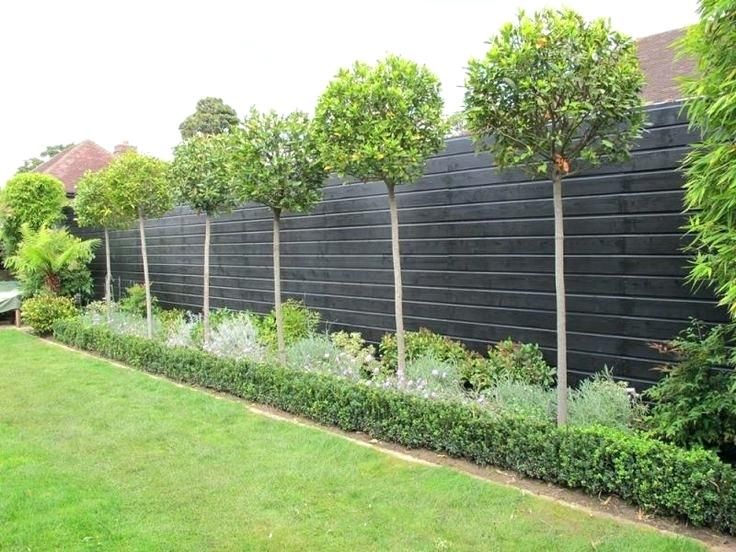 It’s a quick grower, adding several feet to its height each year. Fully evergreen, Leyland cypress is an all-around winner. Hardy down to -10 degrees F, it has few pests, but it grows very tall. Reaching up to 60 feet in height and about 10 feet wide, this tree for screening can block even the rowdiest neighbor! Makes a great hedge when planted on 8 to 10 foot centers.
It’s a quick grower, adding several feet to its height each year. Fully evergreen, Leyland cypress is an all-around winner. Hardy down to -10 degrees F, it has few pests, but it grows very tall. Reaching up to 60 feet in height and about 10 feet wide, this tree for screening can block even the rowdiest neighbor! Makes a great hedge when planted on 8 to 10 foot centers.
Oh how I love this privacy tree! We have three on the side of our house, blocking our view of the neighbor’s house from our dining room table. Hardy down to -20 degrees F, this low-maintenance tree is one of the best trees for privacy. The evergreen foliage is soft and lush. Lawson’s cypress grows very large. It’s well over 40 feet at maturity with a 20 foot spread (though in the wild it grows much larger). There are a few compact cultivars that stay smaller and are worth seeking out for urban yards.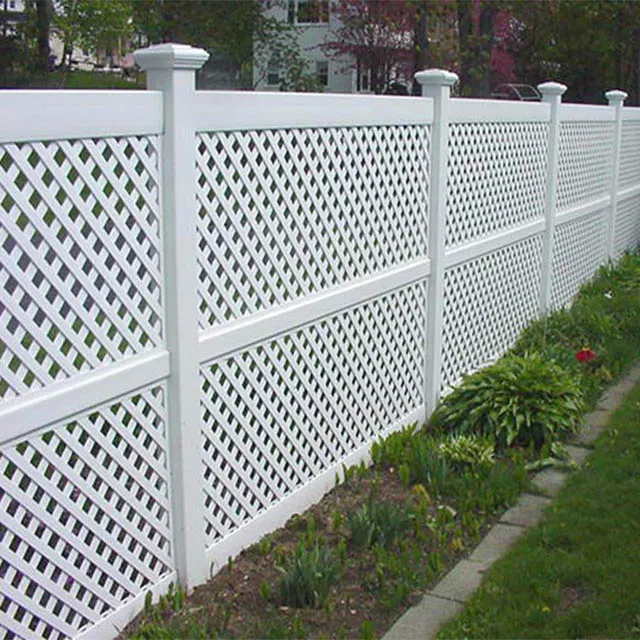
For decades, arborvitae have reigned supreme when it comes to the best trees for privacy and rightfully so. Unbelievably hardy (down to -40 degrees F) with deep green foliage and almost zero maintenance, arborvitae tolerate a vast array of soil conditions. Reaching 20 to 30 feet tall and 10 feet wide, few plants have the power to create solitude the way this one does. There are many cultivars of this privacy tree for small yards and large, including ‘Green Giant’ and ‘Emerald Green’. Arborvitae can be planted close together, about 5 to 6 feet on center.
Tall, narrow evergreens, such as these arborvitae, make excellent screens while creating intimate spaces in the garden.Concolor Fir (Abies concolor)This evergreen tree for privacy is noteworthy for several reasons. Its gray-blue needles are chubby and soft. And its natural conical shape requires no pruning. Toping out at 40 feet high and 20 feed wide, concolor firs are hardy to -40 degrees F and offer a great amount of winter interest. Skip this selection if your soil is poorly drained or if you live in the heat and humidity of the south. A tree with few insect and disease problems, you’ll find it to have a moderate growth rate. It’s a perfect choice for large properties.
Skip this selection if your soil is poorly drained or if you live in the heat and humidity of the south. A tree with few insect and disease problems, you’ll find it to have a moderate growth rate. It’s a perfect choice for large properties.
Another great tree for blocking out the neighbors or the street, red cedars survive winters down to -50 degrees and are native across much of Eastern North America. Deer dislike them, and they shrug off drought and city pollution like a champ. Plus, the prickly foliage keeps wayward neighborhood kids in bounds. With dense growth and a mature height around 30 feet, red cedars are a great fit for tall hedgerows when planted 8 feet apart.
Dragon Lady holly (Ilex x aquipernyi ‘Meschick’ DRAGON LADY)The only broad-leaved evergreen tree for privacy on this list, dragon lady holly offers many benefits. First, the prickly leaves deter deer and other animals (including humans). Next, dragon lady is an excellent hedge plant for small yards. It grows just 10 feet tall and 4 feet wide at maturity. The leaves are a very dark green. Since hollies are dioecious (meaning plants are either male or female) and dragon lady is a female, you’ll need a male plant nearby to pollinate if you want to see beautiful red berries. Good varieties for the job are ‘Blue Prince’ and ‘Blue Stallion’. Hardy to -10 degrees F, this hybrid holly is columnar in form which makes it great for narrow yards.
First, the prickly leaves deter deer and other animals (including humans). Next, dragon lady is an excellent hedge plant for small yards. It grows just 10 feet tall and 4 feet wide at maturity. The leaves are a very dark green. Since hollies are dioecious (meaning plants are either male or female) and dragon lady is a female, you’ll need a male plant nearby to pollinate if you want to see beautiful red berries. Good varieties for the job are ‘Blue Prince’ and ‘Blue Stallion’. Hardy to -10 degrees F, this hybrid holly is columnar in form which makes it great for narrow yards.
If you’re looking for a massive plant to block out a massive view, white pine is it. Long-needled and soft, white pines survive winters down to -40 degrees F. They max out at 60 feet tall and 30 feet wide. Stately trees that are tolerant of city pollution, white pines are quick growing and bear elongated cones.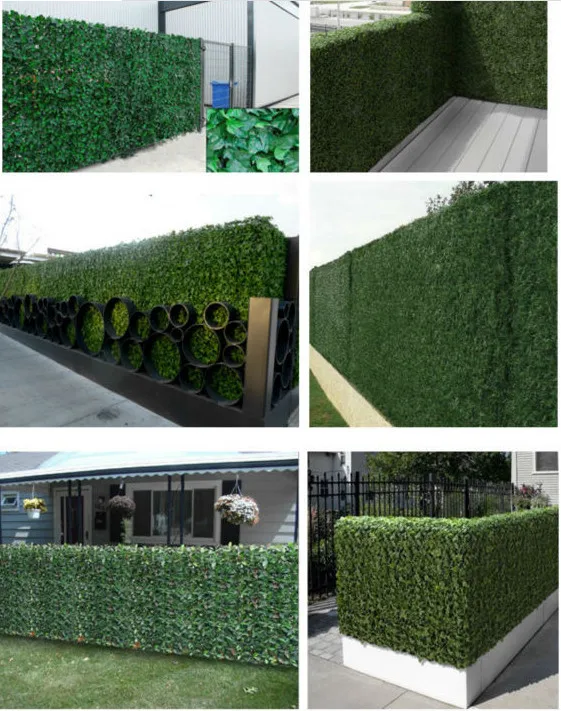 This is not a good plant for the humid south. While it has more pest issues than other plants on this list (including weevils, shoot borers, and sawflies), it’s still a privacy tree worth considering for large areas.
This is not a good plant for the humid south. While it has more pest issues than other plants on this list (including weevils, shoot borers, and sawflies), it’s still a privacy tree worth considering for large areas.
One of the best trees for privacy, false cypress is feathery and soft. Shorter cultivars, such as Soft Serve®, top out at just 6 feet tall, while the straight species grows to 60 feet in the wilds of Japan. The pyramidal form of this tree requires no pruning to maintain. Look for cultivars with blue-, silver-, and yellow-colored foliage, too. Some of my favorites include the Squarrosa types and the Plumosa types. The Mop types are too short for privacy plantings. ‘Filifera’ tops out at 6 feet tall and “weeps”. Most varieties are hardy to -30 degrees F. This is an excellent plant for screening.
I hope you’ve found the perfect privacy tree for your yard on this list. Remember to keep new plantings well-watered for the first year, and mulch them well – but never pile mulch up against the trunk. With time and care, your yard is sure to become your own personal “fortress of solitude” before you know it (minus Superman, of course).
With time and care, your yard is sure to become your own personal “fortress of solitude” before you know it (minus Superman, of course).
For more on the best trees and shrubs for your yard:
- Dwarf evergreen trees
- Weeping Alaskan cedar trees
- Narrow trees for urban gardens
- The best trees with peeling bark
- Small evergreens for year-round interest
- Blooming shrubs for shady spots
- Shrubs for pollinators
What have you done to create a privacy screen in your yard? Tell us about it in the comment section below.
Pin it!
Top 15 best hedge plants
🎁🎁🎁 5000 BONUSES FOR FREE!
Posted by:
5 years ago
388 848
1 comment
We present to your attention a selection of the best plants in our opinion for creating a living fence on your site.
| 1. | |
| Advantages:
Drawbacks: disadvantages of arborvitae include its burnout in the bright sun, while the needles lose their decorative effect and become brown. | |
| 2. Juniper. Common, Cossack, virgin, scaly, and Chinese junipers are used to create hedges. All of them have their own characteristics, but their main advantages are the same: | |
Of the shortcomings of juniper, one can single out its need for good lighting. Otherwise, the bushes become loose and lose their decorative effect. Like all conifers, juniper has a rather slow growth, although this is a minus or plus for a hedge - a moot point. |
|
| 3. Berry yew. Evergreen coniferous plant. Great for creating a living fence and for good reason: | |
The yew has one drawback - all its parts are poisonous. |
|
| 4. Lawson Cypress is one of the most beautiful coniferous plants. | |
| Benefits:
Disadvantages: prefers well-lit areas (goes bald in the shade), requires regular watering and spraying. nine0005 |
|
| 5. Derain white. | |
Perhaps the only feature of turf that can be called its disadvantage is the need for regular cutting. If this condition is not observed, the bush is exposed in the lower part, it looks sloppy. nine0005 |
|
| 6. | |
| Benefits:
has no defects. |
|
| 7. Coronal mock orange A beautifully flowering fragrant shrub up to 3 m high. It is frost-resistant and unpretentious, excellent for the conditions of the middle lane. | |
The plant has no significant shortcomings, it should only be noted that well-lit places should be chosen for planting mock orange, and the soil should not be compacted and waterlogged. nine0005 |
|
| 8. Spirea. A very ornamental shrub with beautiful abundant flowers. A spirea hedge can reach a height of 1.5 m. The plant has many advantages, including: |
- Lush, elegant blooms.
- Handles shearing well.
- Able to take various forms.
- By combining varieties with different flowering periods, a continuously flowering hedge can be created.
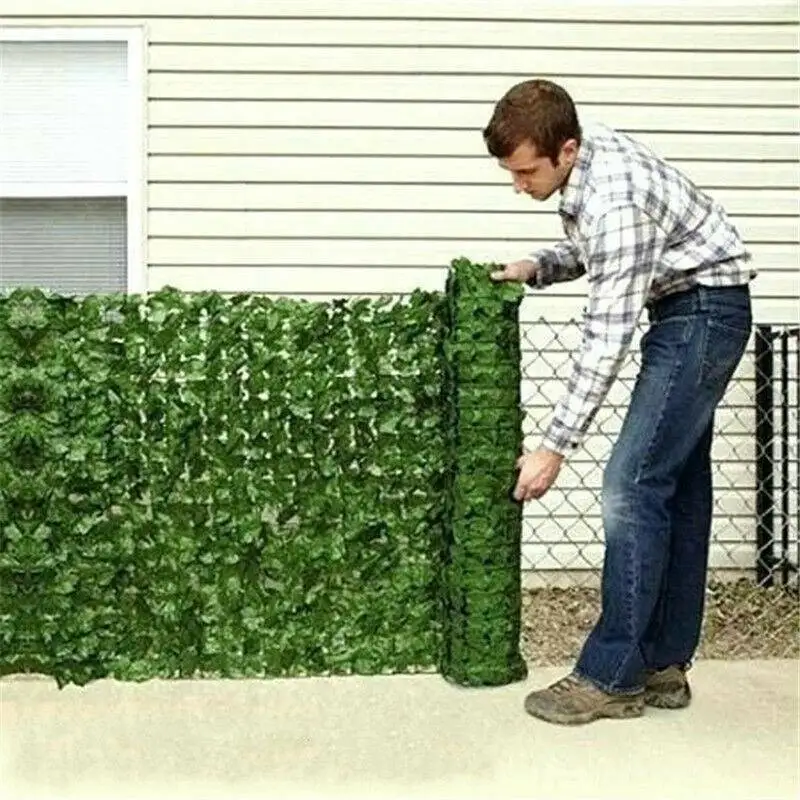 nine0038
nine0038 - A wide range of varieties with different colors of inflorescences.
- Undemanding to soils
To maintain a neat appearance of the shrub, it is recommended to trim the faded inflorescences.
| 9. Thunberg barberry. Great for hedges because it: | |
The plant has its own disadvantages . For example, the presence of long sharp spines complicates the care of the shrub. With a lack of sunlight, the decorative effect of the leaves is lost. The plant propagates easily and appears where its growth is undesirable. |
|
| 10. Privet. Fast-growing shade-tolerant shrub up to 2-2.5 m high. The plant deserves special attention for the following reasons: | |
The only drawback of privet is poisonous fruits. Do not choose this plant if you have children. |
|
| 11. Cotoneaster brilliant. Densely leafy deciduous shrub up to 0.5 to 1.5 meters high. Undoubted Benefits of Cotoneaster: | |
Cotoneaster branches are fairly fast growing so regular pruning is essential to maintain the shape and attractiveness of the shrub. |
|
| 12. Blood red hawthorn. Unpretentious deciduous shrub, characterized by high longevity. The undoubted advantages of the plant are: | |
Irregular shearing of hawthorn can expose the underside of the bush. | nine0002 |
| 13. Lilac. Very ornamental flowering shrub. To create a hedge, the use of undemanding, frost-resistant, drought-resistant varieties, such as Meyer's, Amur and Hungarian lilacs, is recommended. The advantage of lilac over other shrubs is as follows: | |
disadvantages of lilacs include the need for annual cutting of root shoots; a short flowering period, after which the decorativeness of the plant is significantly reduced. |
|
14. Shrub cinquefoil. | |
Every 4-5 years the plant needs a rejuvenating pruning. Requires watering during dry periods. nine0005 |
|
| 15. Hydrangea. Incredibly beautiful shrub with large leaves and very lush flowering. Paniculata and tree varieties are great for creating hedges. Hydrangea Benefits: | |
At the same time, hydrangea is rather capricious, requires frequent watering, needs shelter for the winter, and is demanding on the composition of the soil. The plant needs pruning, since flowering occurs only on the shoots of the current year. |
|
Was this article helpful to you? Share it with your friends and get bonuses for activity
nine0 shared
140 shared
Similar articles
Heal everyone, heal: remedies for the health of garden plants
For full-fledged care of the garden, it may be necessary to use only mineral and organic fertilizers. Keeping plants healthy requires many important preparations, some of which are specifically designed to control pests and diseases, and some are the usual components of a home first aid kit.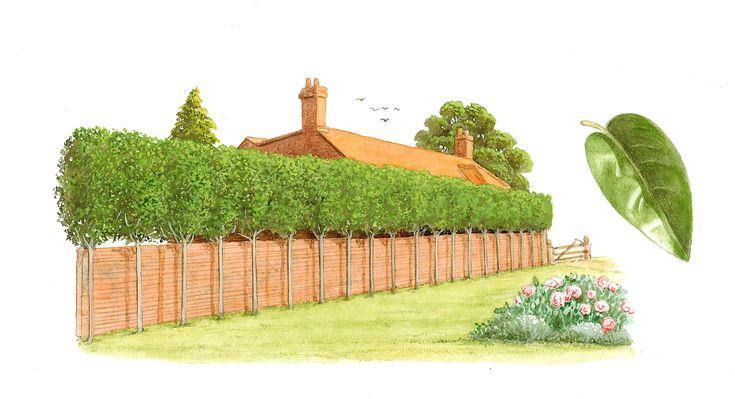 nine0005
nine0005
1 year ago
1 comment
Faster, brighter, earlier: the top ten primroses for the garden
There is a considerable number of primroses that can completely transform the awakening spring garden. Different cultures require different efforts from the gardener to care for them: some primroses need annual digging and transplanting, others can fully develop without transplanting for several years. Each gardener chooses primroses for his garden according to his own taste or fashion trends. nine0005
1 year ago
2 comments
Beauty Has a Name: David Austin's English Roses
Modern grades of the best English roses are created in the nursery of David Austin who managed to create such roses which combine a noble form of ancient flowers and a possibility of a repeated flowering.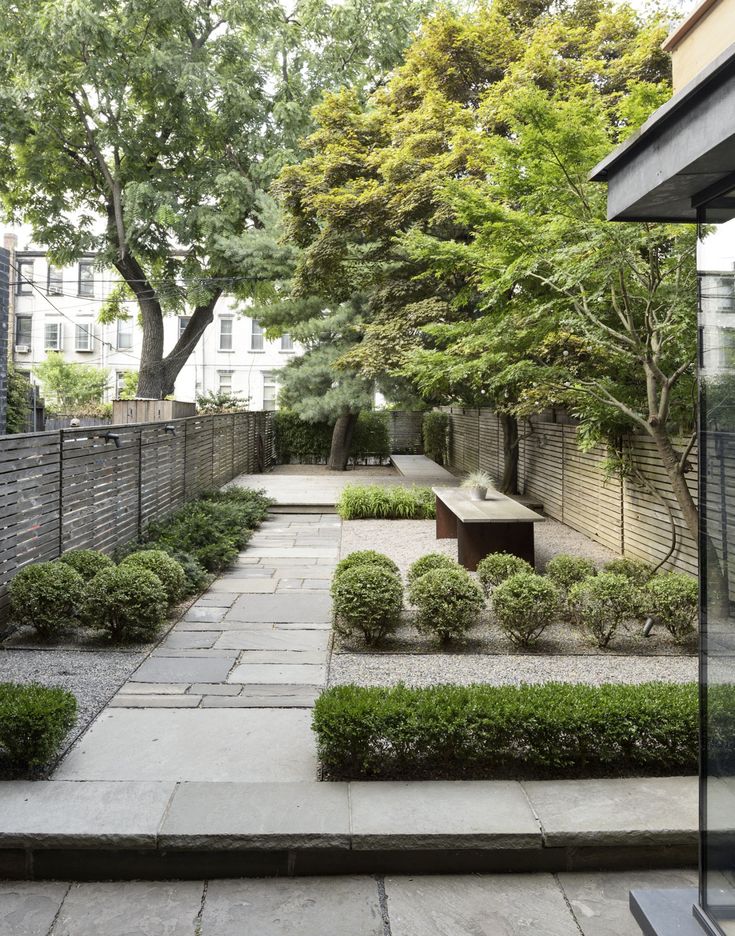 In addition, David Austin roses are distinguished by well-formed immunity, various bush habits and leaf color, and a rich palette of aromas. nine0005
In addition, David Austin roses are distinguished by well-formed immunity, various bush habits and leaf color, and a rich palette of aromas. nine0005
1 year ago
1 comment
The Magnificent Ten: The Tools You Need for Gardening
There is no hard and fast list of tools needed for gardening: each gardener has his own individual preferences, dictating the purchase of the right garden tools. However, each personal list of tools has its own basis, without which the formation of a garden and competent care for it is unthinkable. nine0005
1 year ago
0 comments
The retinue plays queens: the best options for companions for roses
No matter how beautiful and luxurious roses are, their unique beauty can be fully revealed not only in the case of creating monoplants, but also when other garden plants are planted next to them.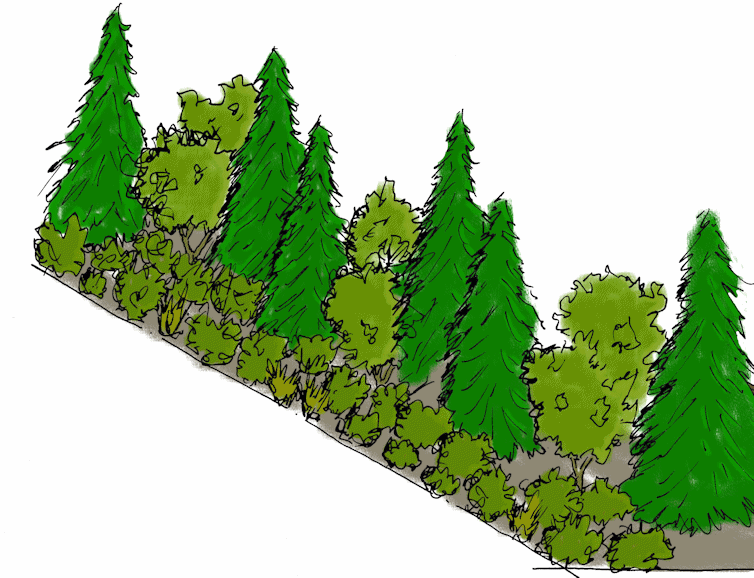 Mixed compositions can reveal the attractiveness of the queens of the garden in a new way, help maintain the health of plants in the rose garden, and place unexpected accents throughout the garden space. nine0005
Mixed compositions can reveal the attractiveness of the queens of the garden in a new way, help maintain the health of plants in the rose garden, and place unexpected accents throughout the garden space. nine0005
1 year ago
3 comments
Trees for hedges
Home » Miscellaneous » Trees for hedges
Everything about trees and shrubs for hedges
What role do you think trees and shrubs can play in the design of the site? The traditional option is to use them as separately growing plants that bear fruit or perform a decorative function. However, the use of live plantings is not limited to this way. By connecting your imagination, you can create unusual topiary figures from these plants, as well as analogues of fences - hedges. nine0005
When deciding to create a hedge on the site, you will first of all face the problem of choosing suitable plants. Unfortunately, not every shrub that you like with its leaves or flowers will look worthy as a green fence. Only those specimens that are characterized by resistance to the climatic conditions of a particular area, easily tolerate a haircut, grow quickly and are capable of growing new shoots from old branches, especially in the lower part of the hedge, are suitable. nine0005
Only those specimens that are characterized by resistance to the climatic conditions of a particular area, easily tolerate a haircut, grow quickly and are capable of growing new shoots from old branches, especially in the lower part of the hedge, are suitable. nine0005
In order to free you from tedious thinking and analyzing the properties of various plants, below is a list of bushes and trees that are sure to decorate your site in the form of a hedge.
Hedge bushes
Most often, gardeners prefer to create hedges, about 2 m high. And for these purposes, it is easiest to select unpretentious shrubs. Let's look at some of them.
Hedge bushes
Barberry hedge
Barberry is the most thorny shrub in the range of green fence plants. By planting such a fence, you can forget about the frequent visits to your site by neighbors' dogs and cats, and two-legged pests will think several times whether it is worth climbing through the sharp prickly spikes of your fence.
[include id="5" title="YAN - in the text"]
There are many varieties of barberry, so if you wish, you can create both high green walls and a small border from this plant. For example, varieties of Thunberg barberry (Berberis thunbergii) with burgundy, green or yellow leaves are low, so they are only suitable for creating hedges no more than 1.2 m high. If your dream is a huge green wall, then Ottawa barberry (Berberis ottawensis) with purple foliage, some varieties of which can grow up to 4 m.
Barberry hedge
Hawthorn hedge
A beautiful hawthorn can also be chosen as a thorny hedge plant, the wall of which will be truly impassable due to the high density of branches. This is a rather tall shrub, some varieties of which can reach 8 m. Having planted a hawthorn hedge, you can forget about the need to update it, because this plant is characterized by extraordinary longevity. For example, in England there are still green plantings of hawthorn, which are at least 400 years old! nine0005
Hawthorn tolerates pruning and any shaping, up to the weaving of branches to increase the density of the hedge.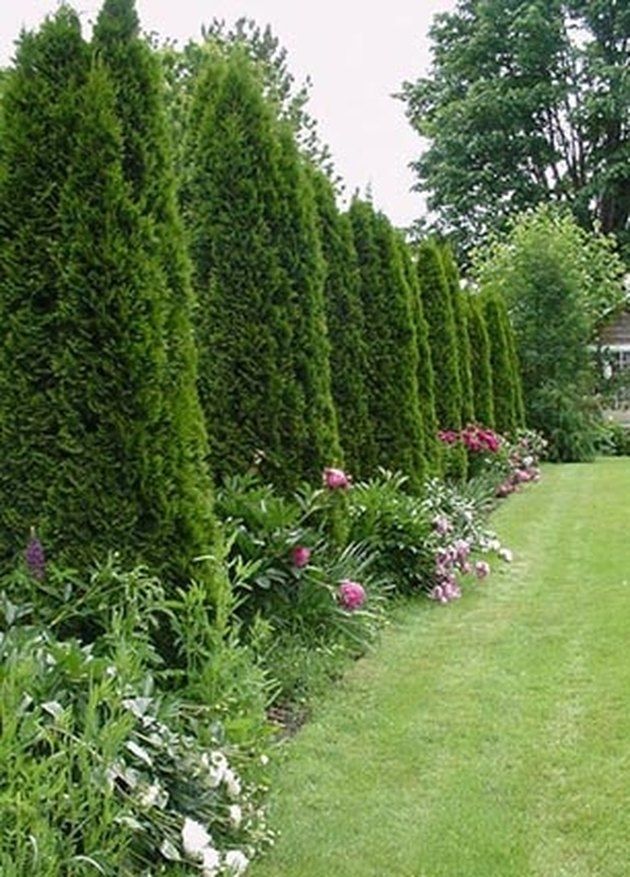 Dense green leaves and bright red or orange-black clusters of berries give decorativeness to the plant. Having chosen this plant for your green fence, it is advisable not to stop at just one variety of hawthorn. Plant several varieties in one group - they will get along well together, in addition, a variety of colors of berries and leaf shapes will give the green hedge an incomparable flavor and charm. nine0005
Dense green leaves and bright red or orange-black clusters of berries give decorativeness to the plant. Having chosen this plant for your green fence, it is advisable not to stop at just one variety of hawthorn. Plant several varieties in one group - they will get along well together, in addition, a variety of colors of berries and leaf shapes will give the green hedge an incomparable flavor and charm. nine0005
Hawthorn hedge
Lilac hedge
Lilac bushes will also be able to decorate your plot, the hedge of which in the spring will delight not only with green leaves, but also with luxurious inflorescences with an amazing aroma. This plant is ideal for creating a non-formable, free-growing hedge. Lilac is considered a rather unpretentious shrub, demanding only on the composition of the soil. It is not advisable to place such a fence if your site has clay, sandy or acidic soil. nine0005
Unfortunately, the excellent varieties of varietal lilacs are not suitable for hedges.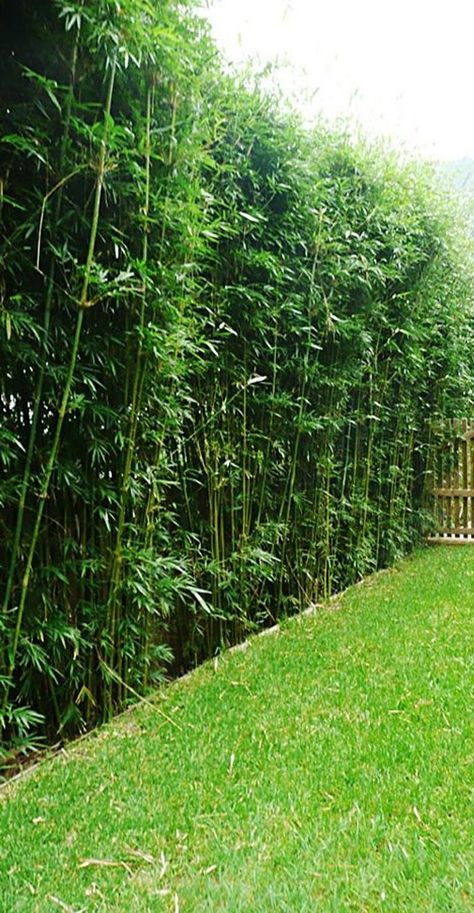 Despite the fact that such a lilac has a compact, dense crown, with age, its lower part ages and becomes bare. It is better to pay attention to wild-growing species that grow quickly, forming a lush and dense green mass, do not age so noticeably and are resistant to pest attacks. Among these, the most suitable species, one can note the Amur lilac (Syringa amurensis), Hungarian (Syringa josikaea), hairy (Syringa villosa), Persian (Syringa persica) and ordinary (Syringa vulgaris). nine0005
Despite the fact that such a lilac has a compact, dense crown, with age, its lower part ages and becomes bare. It is better to pay attention to wild-growing species that grow quickly, forming a lush and dense green mass, do not age so noticeably and are resistant to pest attacks. Among these, the most suitable species, one can note the Amur lilac (Syringa amurensis), Hungarian (Syringa josikaea), hairy (Syringa villosa), Persian (Syringa persica) and ordinary (Syringa vulgaris). nine0005
Lilac hedge
Rosehip hedge
For a green fence, you can also choose dense thickets of wild rose with bent hard thorns. In addition to the fact that such a fence is almost impassable, it is also very decorative. During flowering, wild rose bushes are covered with many pink fragrant flowers, which are replaced by no less attractive dark red fruits. The most popular hedges are wild rose (Rosa canina), wrinkled (Rosa rugosa), cinnamon (Rosa cinnamomea). nine0005
Rose hip hedge
Green tree walls
If you want to create a high hedge - the so-called green wall - then you should choose plantations of coniferous or deciduous trees.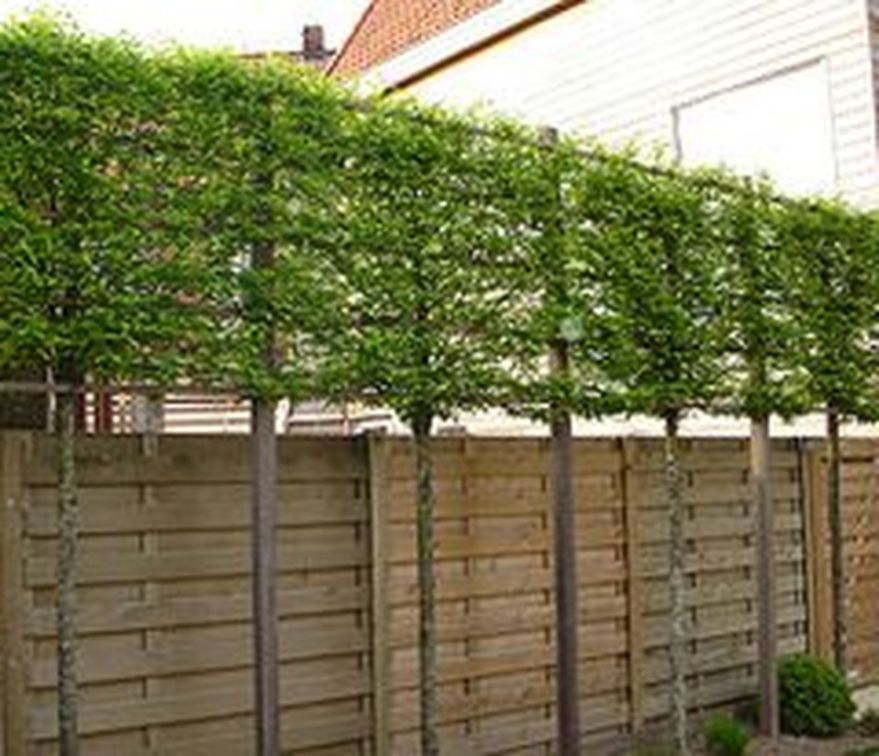
Trees for hedges
Spruce hedges
Huge living walls up to 5 to 6 m high can be created using spruce plantings. The tree responds well to shearing, quickly growing young shoots. However, it should be remembered that drought and low humidity are detrimental to Norway spruce. For dry areas, choose North American spruce, which is completely undemanding and capable of normal growth in any soil. nine0005
Spruce hedge
[include id="6" title="YAN - in text"]
Spruce hedge requires regular trimming. Unfortunately, if you got an abandoned site with neglected spruce plantations, then it will be difficult to correct the mistakes of the previous owners. The fact is that pruning spruce wood, which is older than three years old, can lead to the death of the entire tree.
Willow hedge
Willow hedge
Willow is also an excellent material for green walls. All species of this plant are frost-resistant, easily tolerate a haircut, and can grow even on excessively moist soils, for example, near water bodies.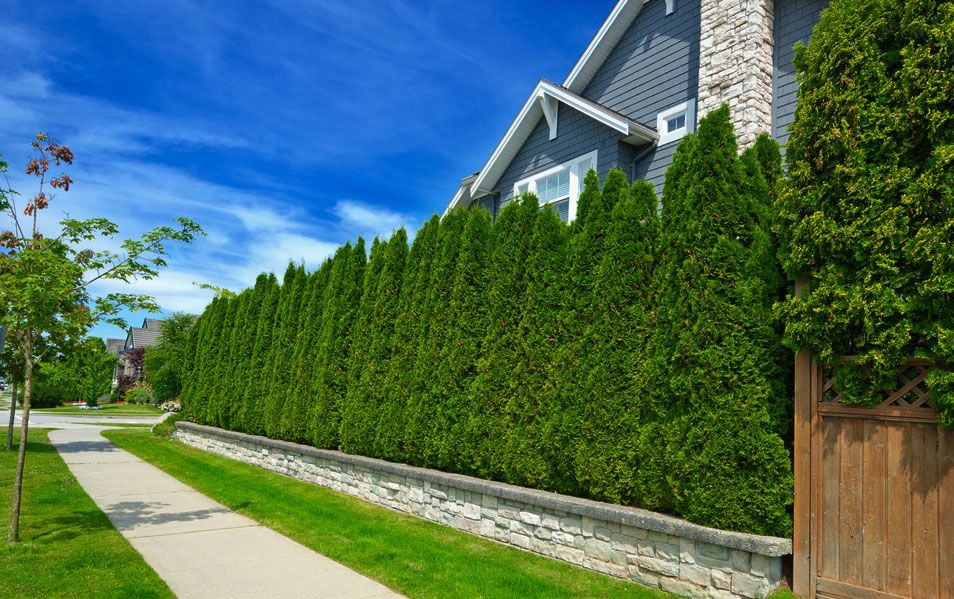 In addition, the willow fence grows rapidly, reaching quite a decent size in a couple of years. The best species for creating green fences are: willow (Salix acutifolia), goat willow (Salix caprea), purple willow (Salix purpurea). nine0005
In addition, the willow fence grows rapidly, reaching quite a decent size in a couple of years. The best species for creating green fences are: willow (Salix acutifolia), goat willow (Salix caprea), purple willow (Salix purpurea). nine0005
Hedge in the garden, at the cottage + 50 photos: recommendations for the care and selection of shrubs for a green fence
Gardening specialists have adopted a conditional division of hedges into types, namely: a hedge from homogeneous shrubs and a hedge from a "mix" shrubs. Let's take a brief look at each type.
Hedge of uniform shrubs
The photo shows an example of a hedge of uniform shrubs in the garden.
A hedge of homogeneous shrubs composed of only one type of plant. The most popular shrubs for this hedge are:
We briefly considered the features of some types of shrubs presented, so we will not dwell on this issue.
Mixed shrub hedge
Mixed hedge, you guessed it, consists of a mix of several types of ornamental shrubs.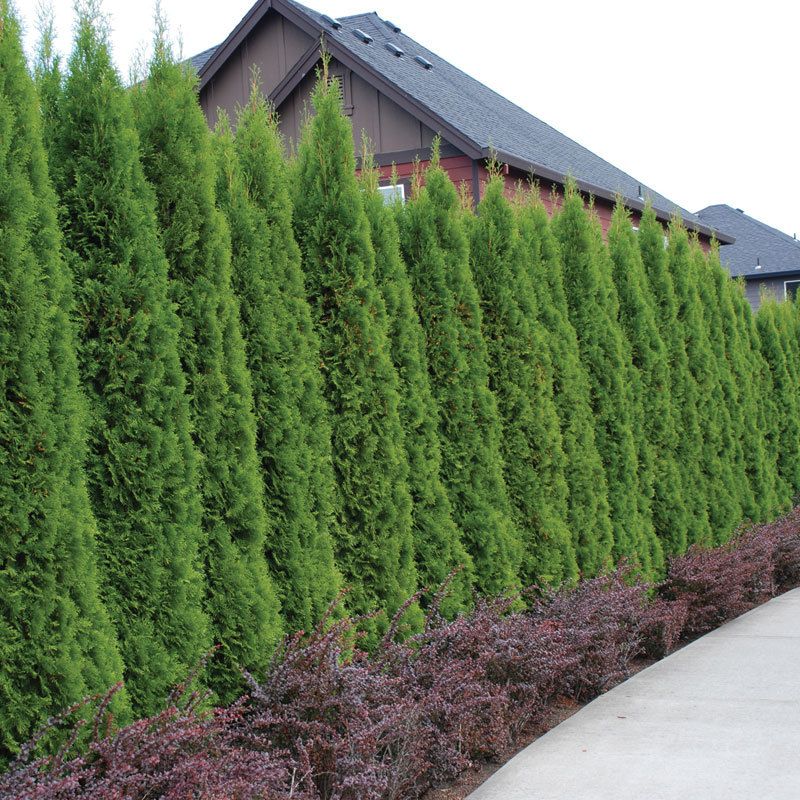 A prerequisite for creating this type of hedge is the careful preparation of the layout of the shrubs.
A prerequisite for creating this type of hedge is the careful preparation of the layout of the shrubs.
The photo shows an example of a mixed hedge in a country garden. nine0005
If a hedge of homogeneous shrubs can only perform a protective function, then a mixed hedge is aimed at complementing the landscape design of the site, because has a very luxurious bright appearance.
15 Photo examples of hedges from different shrubs and trees - color mix
To create a mixed hedge, it is customary to use not only planting shrubs, but also the selection of trees for the garden of a country house, dacha or cottage. The most popular trees for hedges in the garden are:
- Ornamental spruce or blue spruce,
- Birch,
- Linden,
- Elder,
- Viburnum,
- Pine,
- Maple.
We also briefly considered the features of these trees in the corresponding article. Among shrubs for mixed hedges, the same plants are used as for ordinary hedges.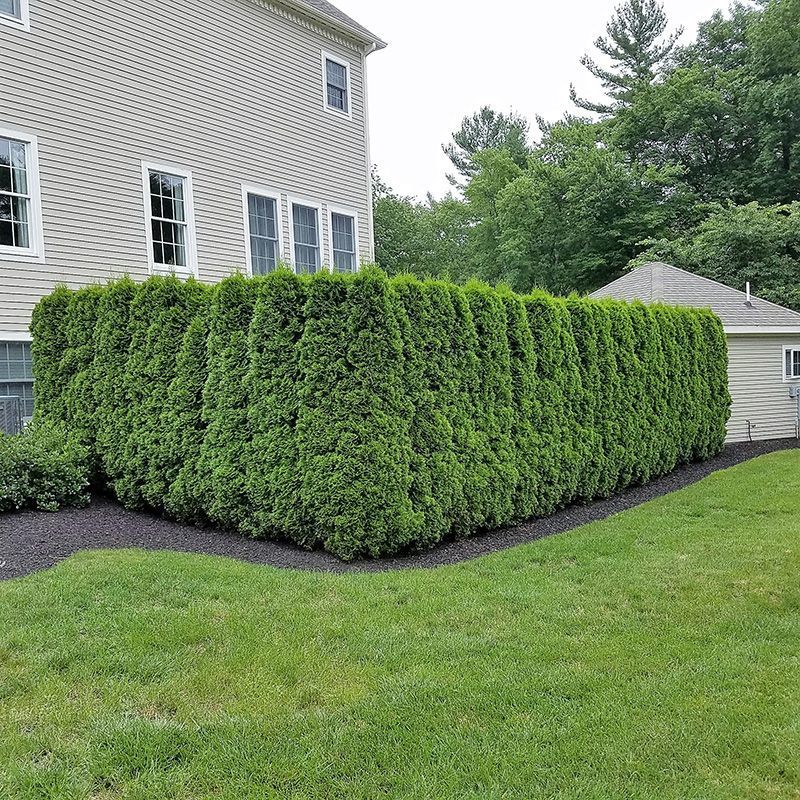
Features of creating a hedge from ornamental shrubs
In order for a hedge to fit well into your garden plot and begin to show its decorative function as quickly as possible, you need to correctly approach the main issues:
Growth rate of shrubs
The first thing to consider is the fact that more than one season may pass from planting shrubs to the appearance of a full-fledged hedge, usually the growth time of a hedge in a garden is 2-3 years.
Pictured is a mature hedge after 3 years of growth.
In order to naturally accelerate the maturation process of the hedge, the following requirements must be observed:
- sunlight promotes plant growth. If you place a hedge in the shade, you will not only delay the flowering of the hedge, but also spoil its appearance (because the shrubs will reach for the light and go beyond the even wall). nine0038
- Each climate and soil will require certain types of shrubs that will be able to grow and function normally under given conditions.
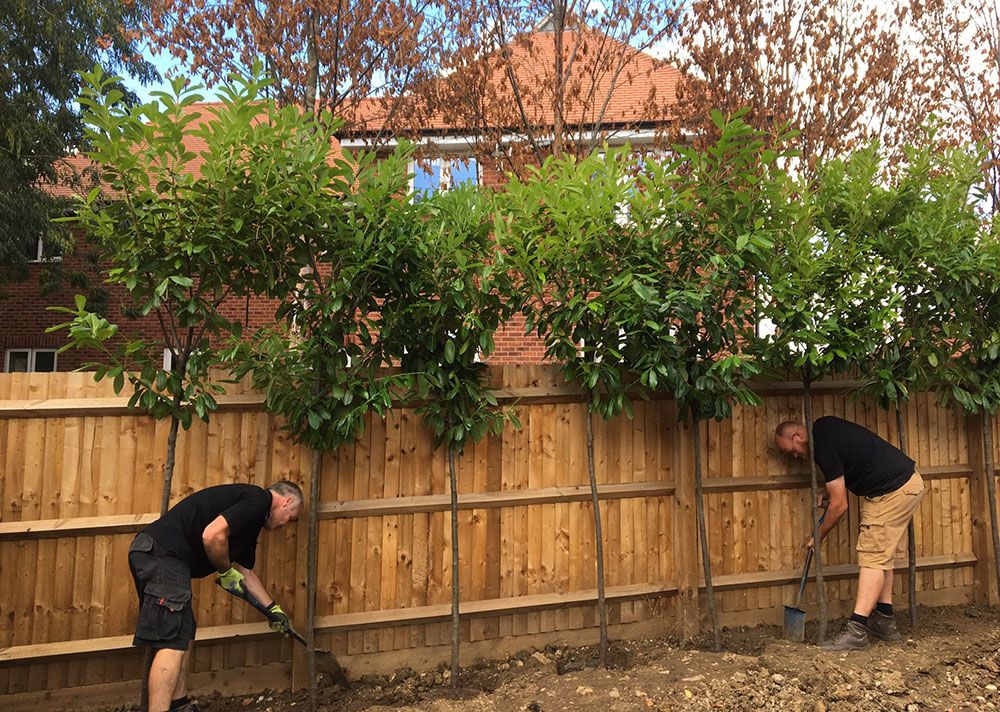 For example, if you plant a climbing rose hedge in an area with high humidity that is in the shade, the plants will not be able to live in these conditions and the season. Therefore, before creating a hedge in your summer cottage, it is recommended to take the advice of a landscape designer and gardener who will advise you on the most suitable plants for your garden. nine0038
For example, if you plant a climbing rose hedge in an area with high humidity that is in the shade, the plants will not be able to live in these conditions and the season. Therefore, before creating a hedge in your summer cottage, it is recommended to take the advice of a landscape designer and gardener who will advise you on the most suitable plants for your garden. nine0038
Preparing soil for hedges
The photo shows an example of a loose hedge in a summer cottage.
Since shrubs for hedges require an increased amount of moisture and nutrients, the soil must be abundantly fertilized, loosened and watered. Read also our instructions for installing an automatic garden irrigation system.
Do not forget that shrubs do not tolerate tight spaces, so they must be planted at a short distance from each other. nine0005
Fertilize the soil with mineral and organic fertilizers.
In order to plant a seedling in the soil, it is necessary to create an appropriate planting hole, free the seedling from the cover and straighten the root system and place the plant in the hole.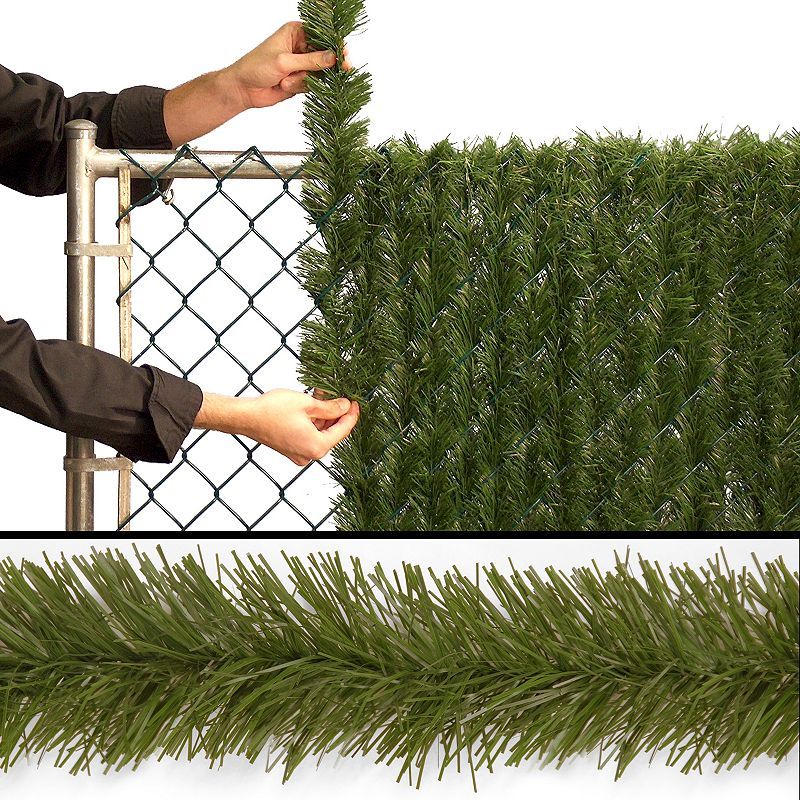 Next, the roots are sprinkled with soil, lightly tamped and watered.
Next, the roots are sprinkled with soil, lightly tamped and watered.
Choosing the height of shrubs
This question depends on the purpose of the hedge.
If you want to zone the area with a hedge, it is enough to create a half-meter green wall. nine0005
The photo shows a low hedge, for an internal fence, not an external fence.
The following shrubs are suitable for low hedges:
If you want to hide from the eyes of your neighbors and have a comfortable tete-a-tete holiday, you need to create a hedge, at least 2.5 meters high. nine0005
Hedge for privacy, over 2 meters high.
For this, shrubs such as:
- ANDISITY ADSISE,
- Cedar Stlavnik,
- Tuya,
- GRUB OF EXCIENCE,
- Kizilnik,
- juniper,
- TIS.
Well, if the hedge serves as a fence of the estate, it is necessary to choose the tallest ornamental trees and shrubs for the hedge, their height exceeds 3 meters, and they have the following names:
Fencing hedge - green bush fence.
35 Photo of a hedge of large, large trees and shrubs
Sometimes trees and shrubs grow to very large sizes, then no one will look behind your fence.
This, in fact, is all that I wanted to tell you about shrubs for hedges in your garden, in a country house or cottage, cottage. We also recommend that you read the article flower garden in the country with your own hands!
Selection of shrubs and trees for hedges
Arranging a green fence on the site is an exciting and creative activity. However, the choice of trees and shrubs for hedges requires a careful and thoughtful approach. It is necessary to take into account many different nuances: the main tasks of plantings, landscape features, soil characteristics, climatic conditions and other important points.
The purpose of the hedge
The choice of plant species for the hedge largely depends on the preferences of the owners of the site, so it is first necessary to determine the priority functions of future plantings.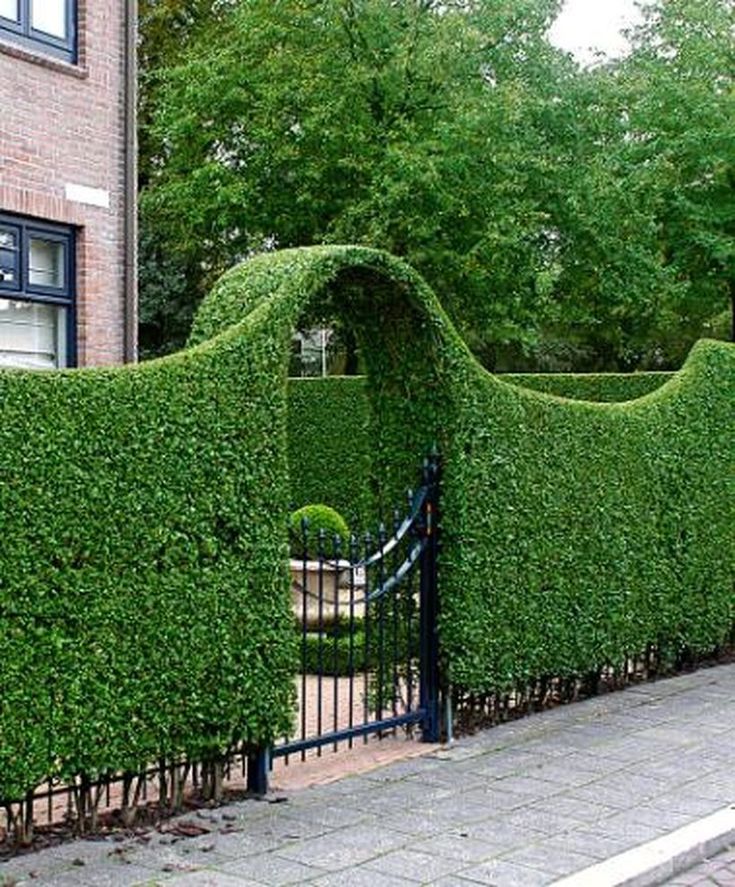 Border landings are designed to perform many different tasks, the most important of which are:
Border landings are designed to perform many different tasks, the most important of which are:
- decorative design of the territory;
- protection from prying eyes, entry into the site of third parties and animals;
- even distribution of snow cover, prevention of drifts;
- retardation of snowmelt in spring, contributing to sufficient saturation of the soil with moisture;
- attraction of birds that destroy pests;
- wind and solar resistance.
When arranging a living fence, zealous owners want to derive additional benefits in the form of tasty, nutritious fruits and choose the appropriate plant species. For some land owners, the main qualities are the unpretentiousness of trees and shrubs and the ease of caring for plantings. nine0005
Of course, many gardeners want to see the results of their work as soon as possible and try to choose fast-growing species for creating a hedge.
Landscape designers successfully use climbing plants, shrubs and trees in a variety of combinations to form a dense green fence. Both deciduous and coniferous species do an excellent job with the role of a natural fence.
Both deciduous and coniferous species do an excellent job with the role of a natural fence.
Shrub selection
Beautiful and dense fast growing hedge shrubs are widely used in landscaping. Depending on the desired height of the fence, decorators choose plant varieties:
- stunted species (eg alpine currant, yellow locust) are good for natural enclosures not exceeding 50 cm;
- shrubs of medium height (eg lilac or cotoneaster) suitable for a two-meter fence;
- Tall shrubs (e.g. hawthorn, dogwood) are best for forming a green barrier up to 3 m. nine0005
Gardeners give priority to shrubs with useful fruits. Barberry is distinguished by its unpretentiousness to soils, the ability to perfectly tolerate shearing and withstand drought. Delicious jams, jams and pilaf are prepared from its berries. However, excessive waterlogging can be detrimental to the plant.
Rosehip pleases owners with fast growth and valuable fruits, from which tasty and healthy drinks are prepared.
 It attracts birds that can protect the site from pests.
It attracts birds that can protect the site from pests. Hawthorn is ideal for forming tall natural hedges. The berries of this plant have many useful properties, are used for medicinal purposes. Drinks from hawthorn fruits have a pleasant sour taste. nine0005
Tern is the best barrier for animals and intruders, it reliably hides the area from prying eyes. Frost resistance and unpretentiousness to the conditions of detention allow it to be successfully used instead of a fence without much hassle for the owners of the site. The fruits of the plant have a delicate sweet and sour taste.
Frost resistance, unpretentiousness to soils and conditions of detention, good survival and excellent external qualities make it possible to successfully form natural barriers from the following plants:
- Japanese quince;
- spirea;
- boxwood;
- lilac;
- vesicle;
- cotoneaster;
- Alpine currant.
For smaller areas, a shrub fence is the preferred option.
 Trees on such properties look unnecessarily bulky and obscure the interior of the plots too much.
Trees on such properties look unnecessarily bulky and obscure the interior of the plots too much. Territory zoning
A live fence is used not only to mark the perimeter of land ownership, but also as an original way of zoning a territory. For the design of flower beds, paths, pools, recreation areas, children's playgrounds, shrubs and climbing plants of various heights are best suited. nine0005
The territory planned with the help of plantations looks spectacular and attractive. In addition, such zoning is often of great practical importance.
A dense green fence around the playground protects the play area from the scorching summer sun and provides a relaxing environment for parents. A small child will not be able to penetrate dense thickets, accidentally run away outside the territory and get lost. Surrounded by beautiful plants, the baby feels comfortable and confident. nine0005
Of course, you should take care of the safety of the child and pay special attention to the choice of bushes for the hedge around the playground.
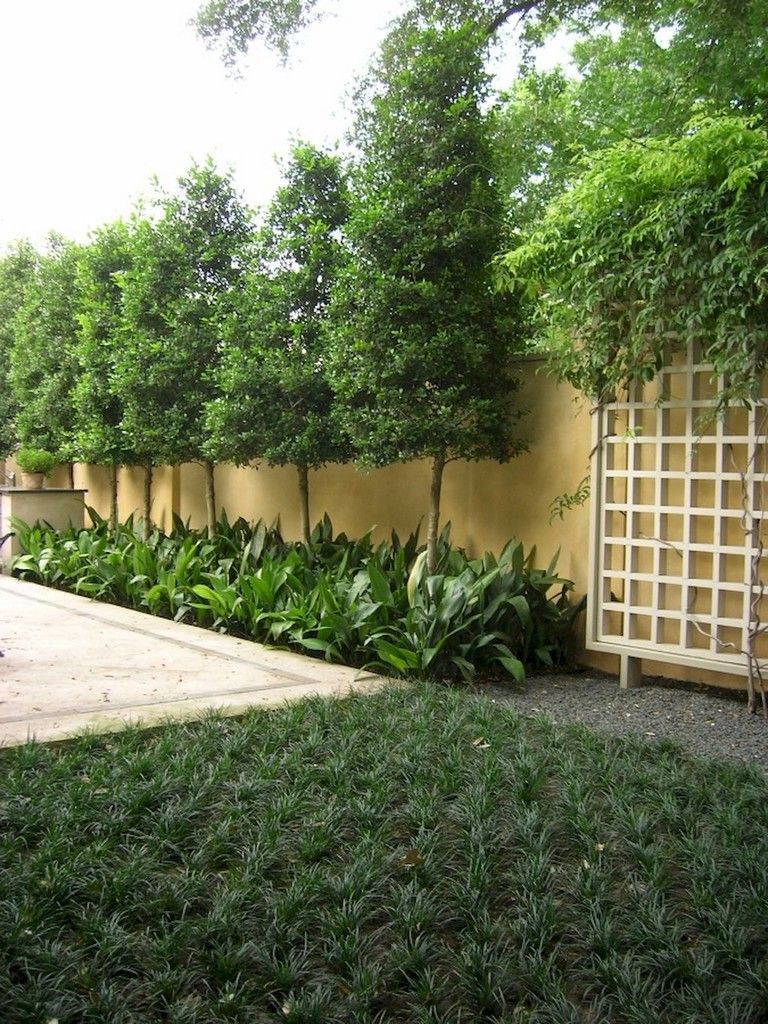 It is better to refuse to plant thorny plants or shrubs with attractive but inedible fruits here. The height of the ecological fence depends on the area intended for games, the age of the young landowner and the tastes of his parents.
It is better to refuse to plant thorny plants or shrubs with attractive but inedible fruits here. The height of the ecological fence depends on the area intended for games, the age of the young landowner and the tastes of his parents. For the arrangement of a recreation area, garden paths and pools, original structures made up of green spaces are good. Ornamental shrubs, trimmed in the form of animal figures or various geometric shapes, look surprisingly picturesque and spectacular. nine0005
Such works of design art are eye-catching, provide onlookers with real aesthetic pleasure and are an excellent disguise for outbuildings that are not distinguished by their attractive appearance.
Ethnic wattle fence
A fashionable wattle fence deserves special attention. In the manufacture of such stylized fences, various types of willow are successfully used. An extraordinary effect can be achieved when using red, as well as purple, holly and goat willow. nine0005
Willow branches are easily intertwined, and the creation of wattle in ethnic style is not difficult for a decorator.
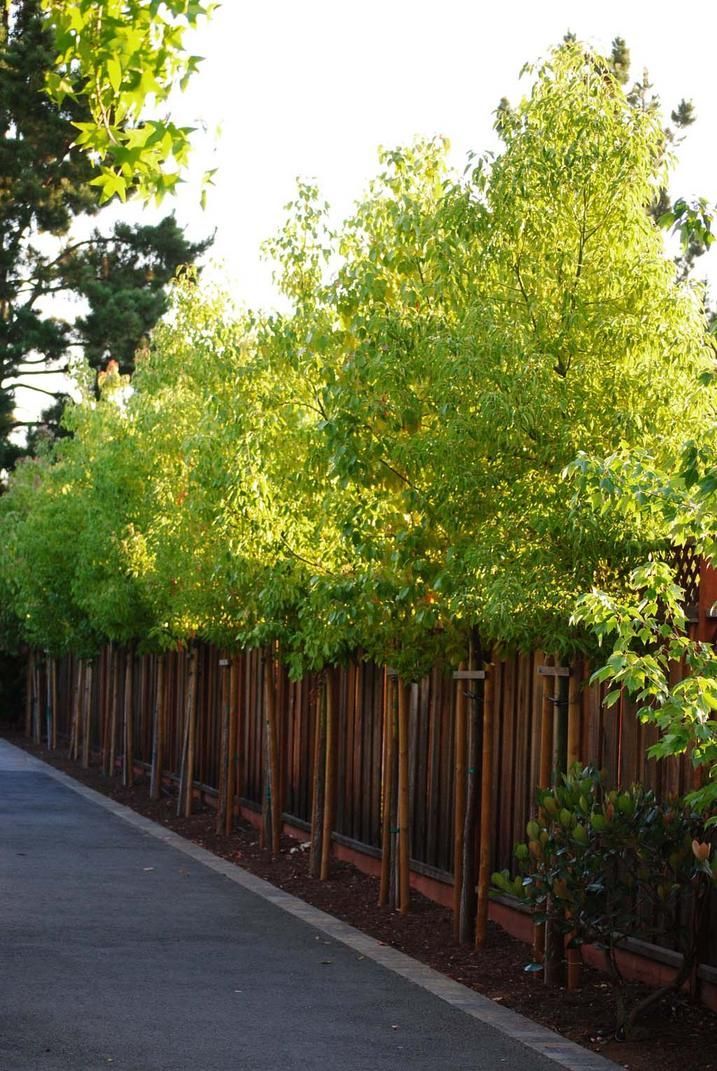 The implementation of the fence begins with the marking of the perimeter. Stakes are hammered along the intended border (at the same distance from each other), willow cuttings are planted between them. In the future, it remains only to twist the pliable branches together.
The implementation of the fence begins with the marking of the perimeter. Stakes are hammered along the intended border (at the same distance from each other), willow cuttings are planted between them. In the future, it remains only to twist the pliable branches together. All varieties of willow grow very quickly, take root well in various climatic conditions and on any soil. Willow is excellent for planting in areas characterized by high humidity and in wetlands. Shearing a willow is usually not a problem. nine0005
Trees for ecological fences
Modern designers form ecological fences not only from shrubs, but also from trees of various species. Spectacular high hedges create the impression of majestic luxury, emphasize the refined taste of the owners of the land and are the highlight of the design of large estates.
When arranging the territory, it is necessary to select trees taking into account the characteristics of the climate, soil, landscape and the wishes of the owners.
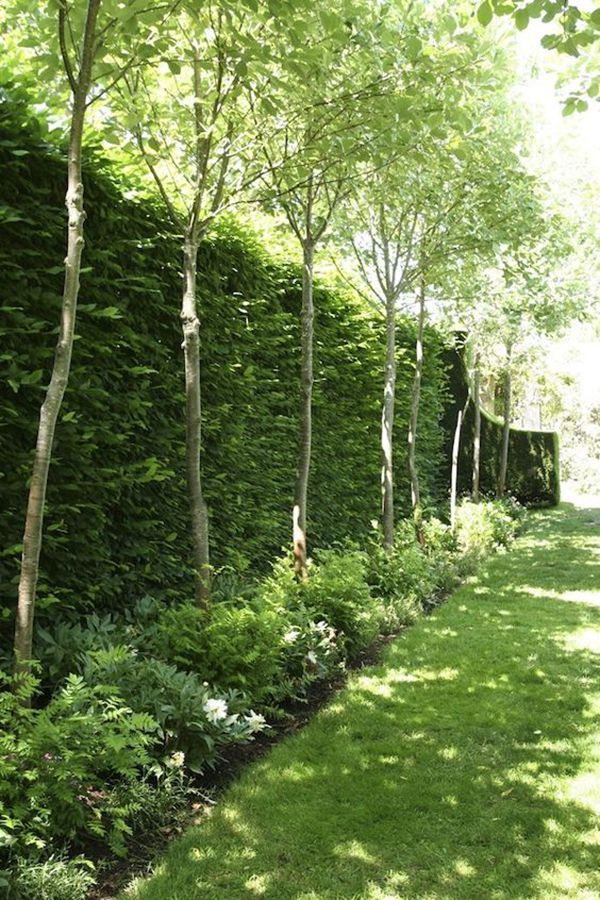 It is better to give preference to varieties adapted to the conditions of the area where they will grow. nine0005
It is better to give preference to varieties adapted to the conditions of the area where they will grow. nine0005 Trees brought from other regions have a reduced ability to adapt to unusual conditions and require special care. Exotic plant species are expensive, but may not take root at all in a new place.
Deciduous trees are good for decorating a romantic garden. The choice of such rocks provides seasonal changes in the appearance of the living framing of the territory.
The use of fast-growing species can speed up the process of forming a hedge from trees. Popular among Russian decorators are certain varieties of mountain ash, birch, linden, maple, poplar, sea buckthorn. Trees are able to successfully withstand the vagaries of the weather and have an aesthetic appearance. nine0005
Fans of constancy are advised to plant evergreen varieties along the fence. Coniferous hedges are of amazing beauty and do not require complicated care.
Thuja takes root well in central Russia, is not afraid of frost, grows on any soil.
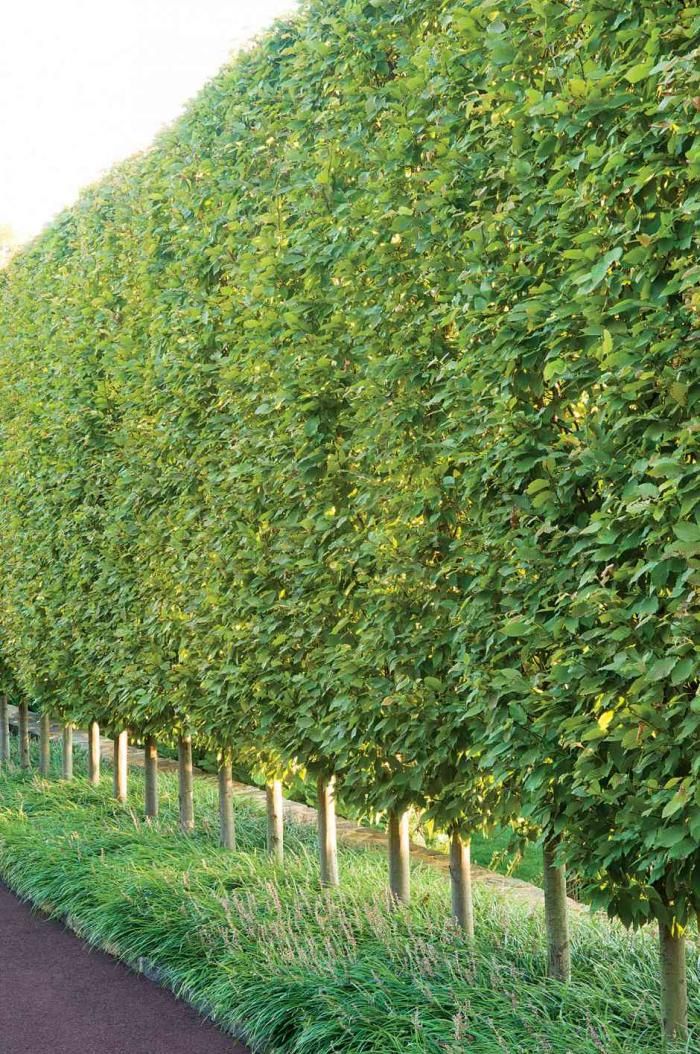 The plant is cut rather rarely. After shearing, the crown becomes especially dense. Thuja is an excellent option for creating extraordinary hedges in the form of columns and pyramids.
The plant is cut rather rarely. After shearing, the crown becomes especially dense. Thuja is an excellent option for creating extraordinary hedges in the form of columns and pyramids. Norway spruce or barbed spruce looks great in its natural state and does not need to be trimmed. Of course, at the request of the owners of the site, the tree can be specially formed. However, do not forget that in the first 2 years after planting, cutting coniferous plants is unacceptable. nine0005
Unsuitable hedge options
Not every plant can be successfully used as a hedge. There are shrubs that can grow intensively to the sides and undermine the soil (for example, raspberries, blackberries). They are almost uncontrollable with cropping. It is not recommended to plant such plants on the border with a neighboring site. Otherwise, there is a high risk of conflict.
It is dangerous to create a natural fence from bushes and trees, which are especially often subject to diseases and attacks of harmful insects.
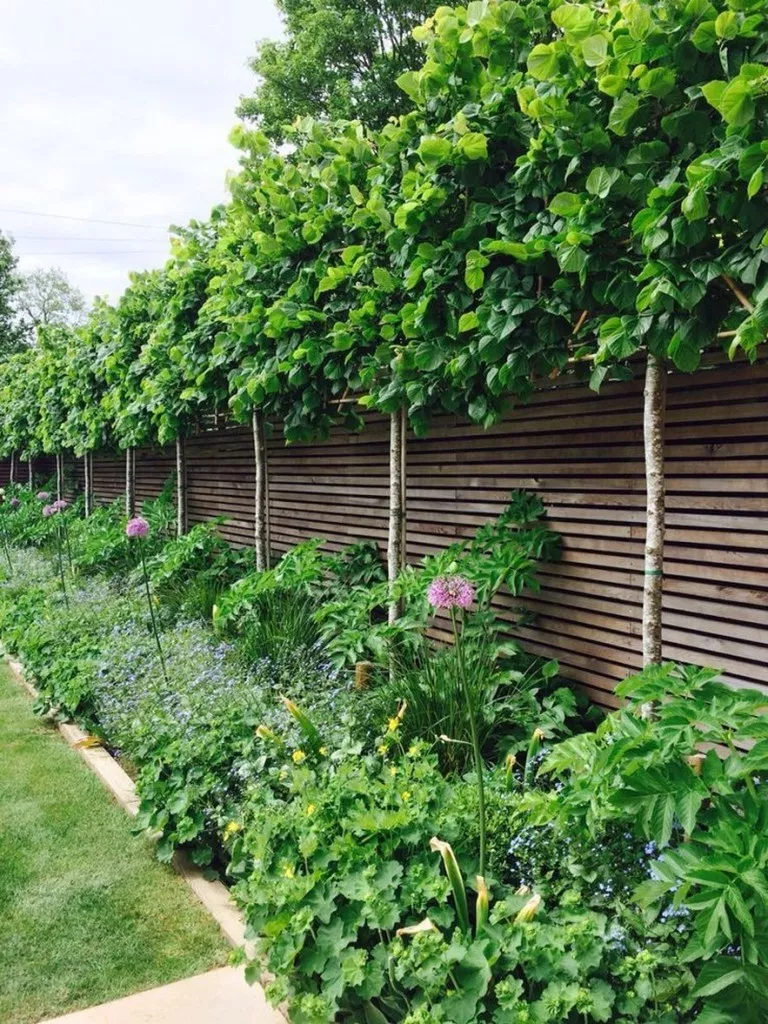
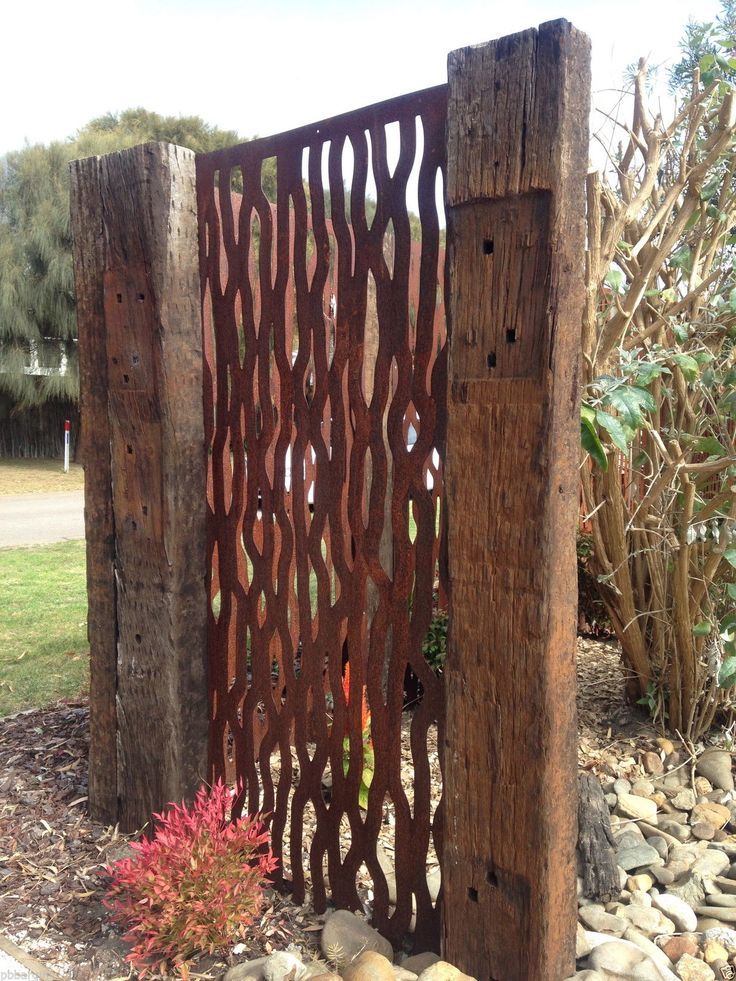 Thuja. Evergreen tree or shrub. In the conditions of the middle lane, it can reach a height of 3 m. It is widely used to create hedges. The optimal planting distance is 80-100 cm. It can be planted in two rows in a checkerboard pattern. In a temperate climate, among the various forms of thuja, the thuja western “Smaragd” and “Emerald” feel best. Among other plants used to create hedges, thuja has its advantages and disadvantages
Thuja. Evergreen tree or shrub. In the conditions of the middle lane, it can reach a height of 3 m. It is widely used to create hedges. The optimal planting distance is 80-100 cm. It can be planted in two rows in a checkerboard pattern. In a temperate climate, among the various forms of thuja, the thuja western “Smaragd” and “Emerald” feel best. Among other plants used to create hedges, thuja has its advantages and disadvantages 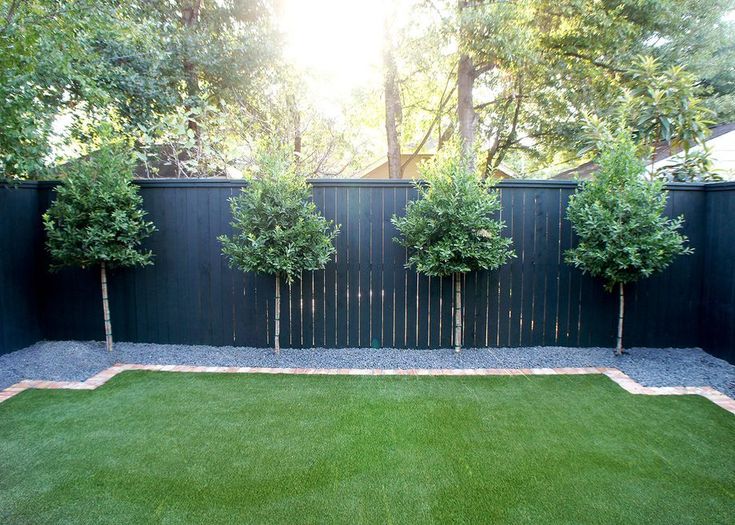 nine0005
nine0005 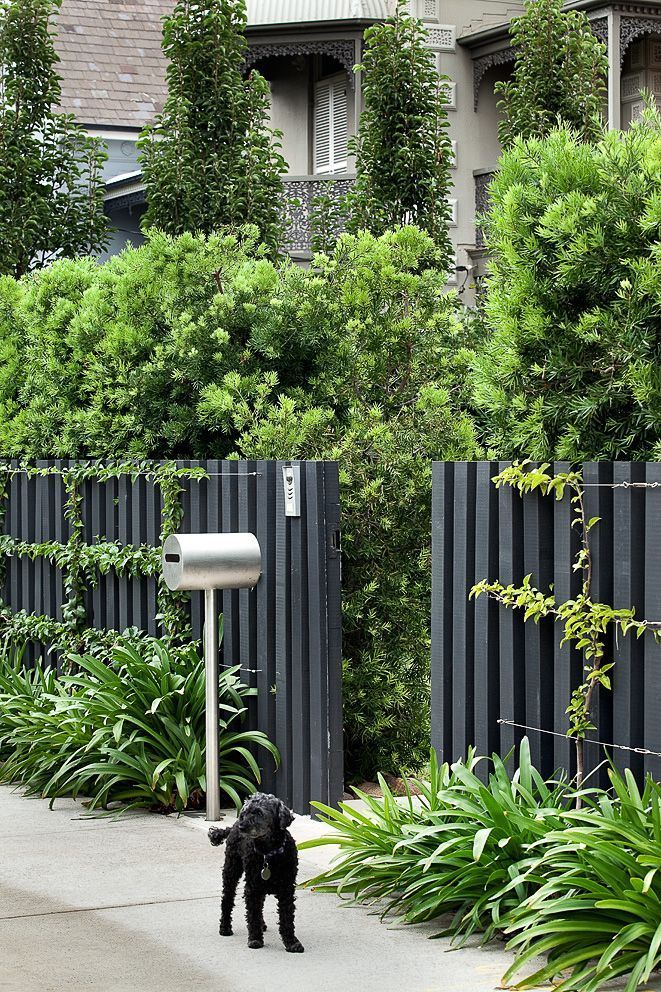
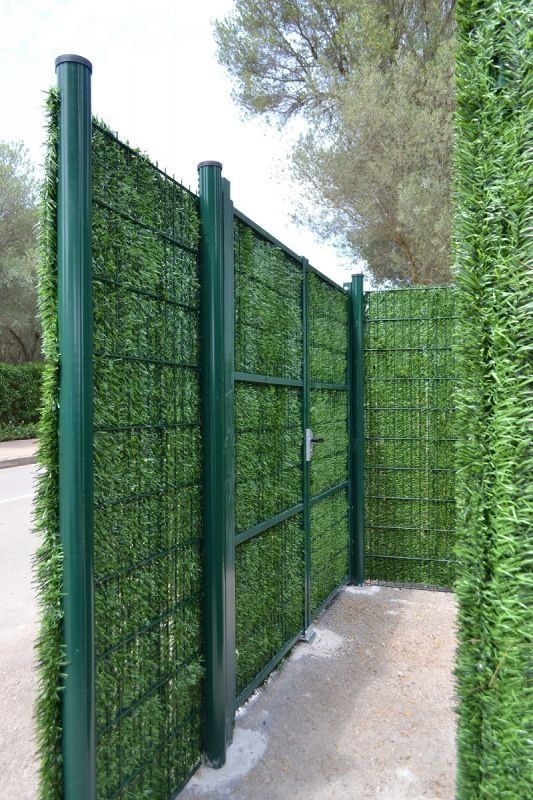 Fast-growing deciduous shrub up to 3 m high. Very beautiful, retains its decorative effect even in winter, thanks to bright red shoots. Blossoms twice a season, in the fall, along with young flowers, rounded white berries appear. The shrub has many virtues , among which:
Fast-growing deciduous shrub up to 3 m high. Very beautiful, retains its decorative effect even in winter, thanks to bright red shoots. Blossoms twice a season, in the fall, along with young flowers, rounded white berries appear. The shrub has many virtues , among which: 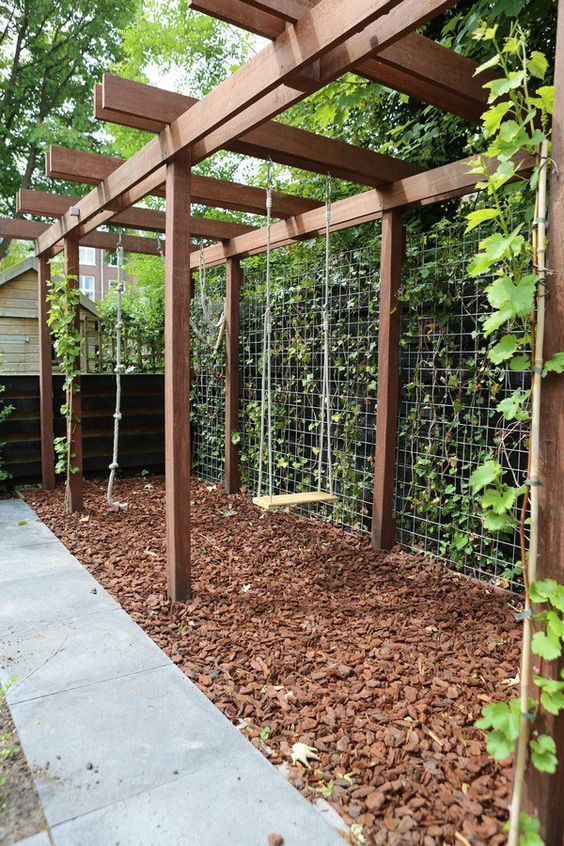 Califolia vesicle. Spectacular shrub with spreading drooping branches and large ornamental leaves. It reaches a height of 3 m. With proper care, a vesicle hedge will become a real highlight of your garden.
Califolia vesicle. Spectacular shrub with spreading drooping branches and large ornamental leaves. It reaches a height of 3 m. With proper care, a vesicle hedge will become a real highlight of your garden. 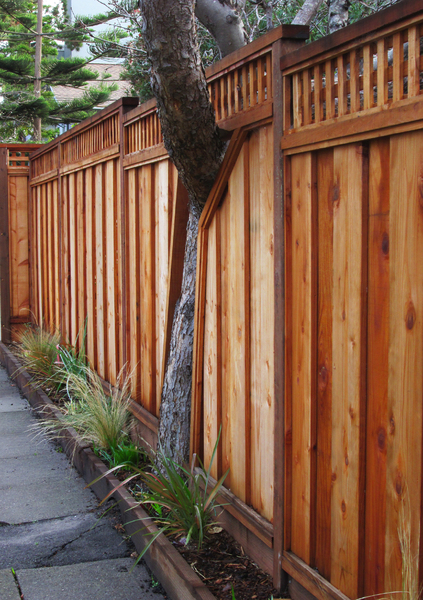 In addition to the already listed advantages of mock orange, the following should be noted:
In addition to the already listed advantages of mock orange, the following should be noted: 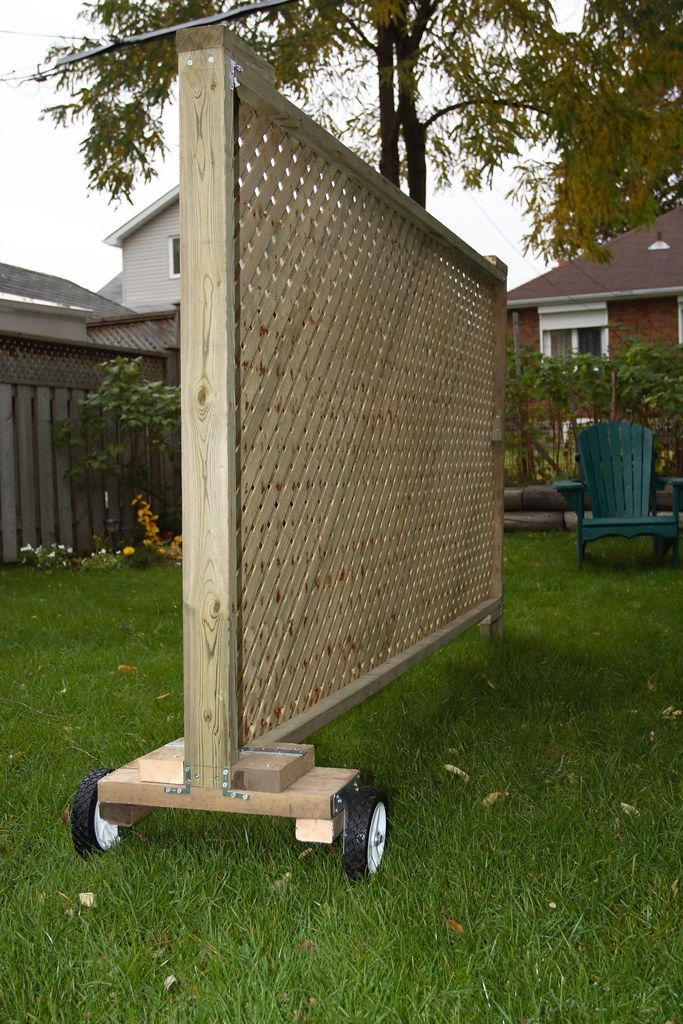
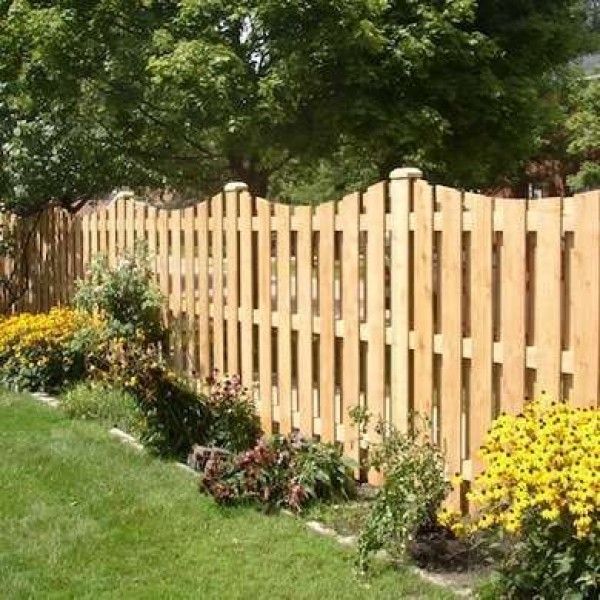
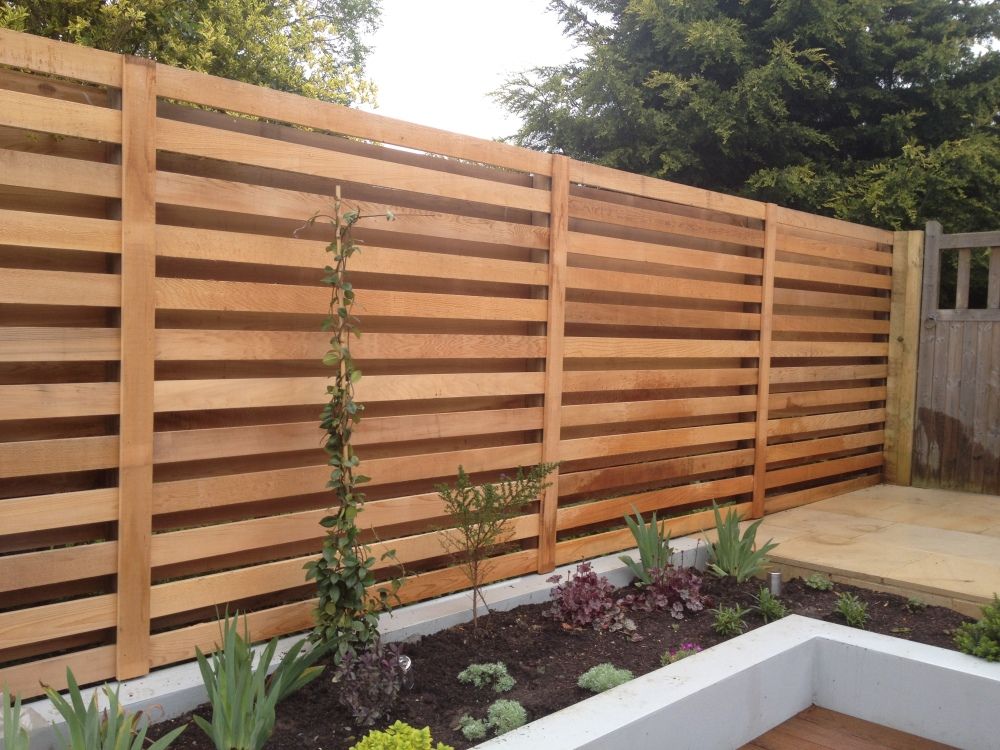
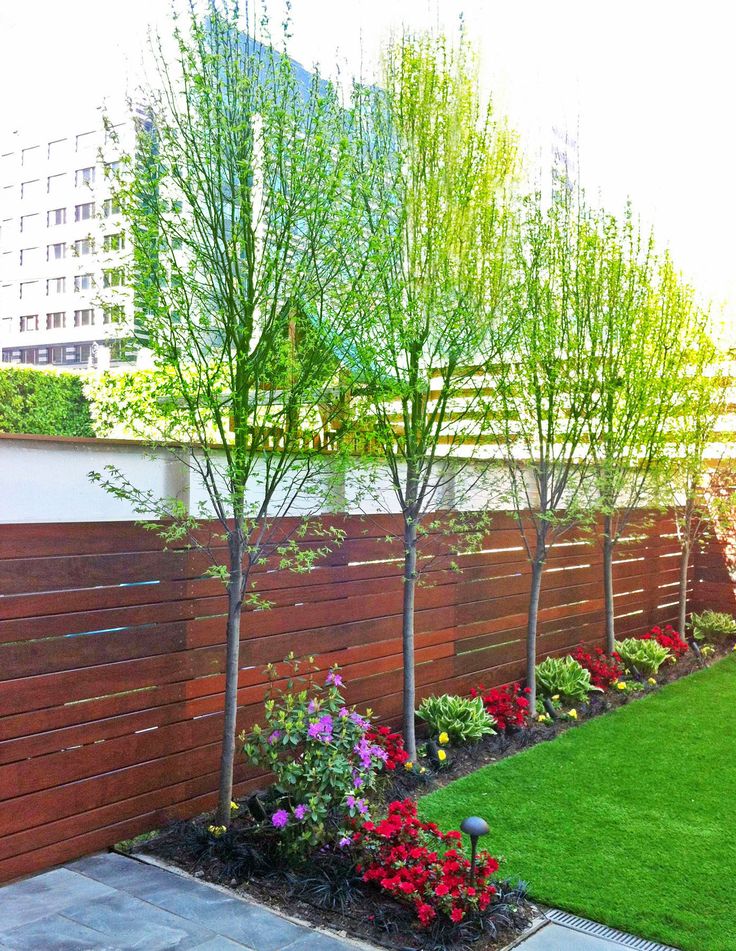 A very decorative compact shrub that blooms from early summer to autumn. The main advantages of the plant:
A very decorative compact shrub that blooms from early summer to autumn. The main advantages of the plant: 